 Sign in
Sign in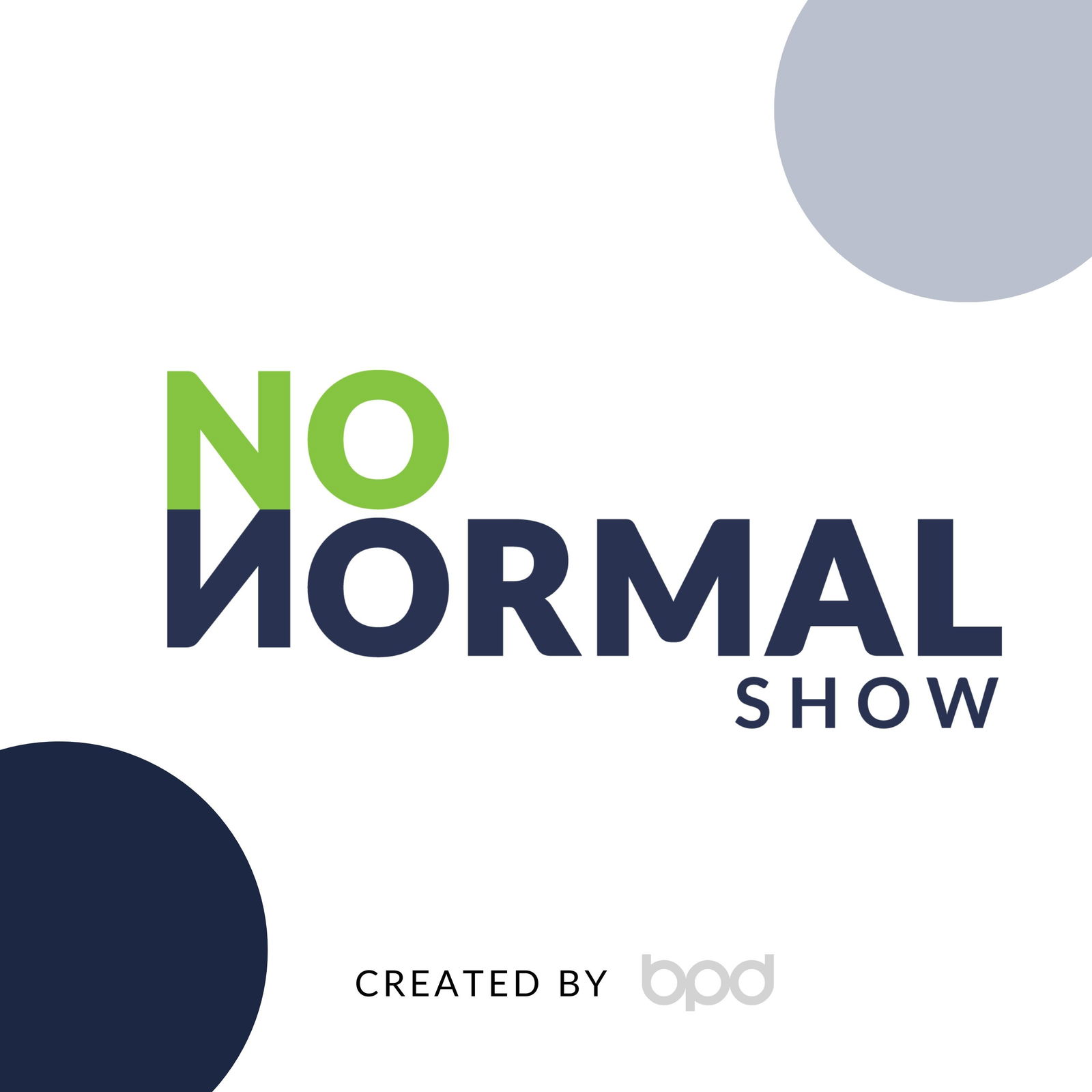
Business
News
BPD Healthcare
In our world of branding and marketing in the health space, there should never be acceptance of the status quo, the old-school, the normal. We should always be pushing forward, celebrating the different, breaking new ground, highlighting the innovative. So welcome to The No Normal Show, our forum for tossing around thoughts, opinions, and ideas on what’s new, cool, different, innovative, questionable, or otherwise related to how consumers navigate health. Plus some other fun stuff thrown in.

Deep Dive into Our COVID-19 Vaccine Consumer Report
Findings from a COVID-19 Vaccine SurveyWhen it comes to determining if the COVID-19 vaccine is safe or not, consumers trust their doctors, health systems, and federal health officials more than anyone else.Hospitals will need to figure out if they require staff to get the vaccine before returning to work?Physicians must be involved in the system's external response to the COVID-19 vaccine and also their internal communications to increase adoption and credibility.Physicians and nurses agree that front-line healthcare workers should be the first to receive the COVID-19 vaccine when it becomes available. Still, most people said (68%) that they'd rather not be in the first wave.Doctors and nurses are just as hesitant – and for the same reasons as consumers.Consumers worry that the first approved vaccine won't be safe, that it won't be useful, and that politics have compromised the process. Health systems must find a way to cut through the noise and provide specific reasons for why it's safe to receive the vaccination.Groups to Prepare Specific Messaging forThree specific groups were shown in the survey that you need to prepare specific messaging for when it comes to increasing the vaccines adoption:Adopters (yes, I will take the vaccine right away)Skeptics (no, I will wait)Rebels (no, I don't plan to get the vaccine ever)From an external standpoint, prioritize the skeptic's group, but from an internal perspective (like physicians), focus on the rebel group.There needs to be a specific communication plan for each group, especially within the health systems.Telling everyone to get a vaccine is not that simple – it's deeper than that; it is phycological. To evoke change, we need to understand what moves people and incorporate that into our messaging.
40:4206/11/2020

Improving the Financial Experience of Your Health System
Key TakeawaysKey TakeawaysHow to Improve The Financial Experience for the Patient Avera Health is are creating a contemporary "shopping" experience for consumers that involves creating tools on their website, which will display pricing for its patients.They're developing a pricing strategy that optimizes competitor price points and creates a more agile pricing system.Which involves surveying the market to give you a better idea of where to be pricing wise.Pricing and experience are the most important things when it comes to brand reputation.How to Build Consistency into Your Patient ExperienceIt sounds simple and should be a given, but being thoughtful is step one.Pricing has to be consistent; you can't be "off" if you want your consumers to understand how pricing works within your hospital.Consumers ultimately make the decision, and that is now beginning to start before they even walk into the door or meet with a specialist.
33:4130/10/2020

The Importance of Consumer Insights During COVID-19
Key TakeawaysHow UNC Health is Using Consumer InsightsUNC Health leverages consumer insights by transforming consumer data into meaningful and actionable insights that empower business decisions.The goal is to predict consumers' behaviors, attitudes, and motivations.Thus, they have new capabilities to know consumers well and build an emotional blueprint to understand consumers' emotions that connect their values and desires to UNC Health.Listening is the glue of consumer insights.We cannot forget to leverage this type of insight and data with our employees, as they are brand ambassadors and consumers of care.How to Leverage Consumer Insights During COVID-19 It is critical right now to during COVID-19, to understand how your local consumer feels.Recently, there has been consumer COVID-19 fatigue, and we continuously have to adapt our messaging to ensure it still sends an urgent message in keeping people safe.One adjustment UNC Health has made is through their content marketing efforts in that they are talking with a patient or consumer, versus just talking at them.How Healthcare Has Left Behind Underserved Communities There is a lot of work to do with all the underserved populations, and COVID-19 has put a massive spotlight on this long-term issue.With underserved communities having a more negative outlook on healthcare and the systems that provide this care, hospitals need to find ways to build trust and proactively serve these communities.UNC Health has created a mobile testing unit that deploys to these targeted areas to ensure everyone has access to testing.
44:5323/10/2020

Leveraging Price & Clinical Transparency as a Brand Differentiator
Key ResourcesHANYS Report on Report CardsJackson Health System Care QuoteJackson Health System Quality Data PlatformKey TakeawaysJackson Health's Transparency PhilosophyWhen there is clarity about what public institutions are doing, it allows them to create buy-in and build alliances within the organization.With Jackson Health System being a public hospital, they've embraced the idea of transparency and have made it a part of their DNA as an organization. How to Address TransparencyRather than relying on other sources or reviews, Jackson Health has leveraged public data and display it for all to see on their Quality Data Program site.Being a transparent organization means that you share your health systems' performance, even in areas you are not performing as high as competitors or the national average.This public data is being leveraged to motivate internal teams to improve on the quality of care where needed.Pricing transparency with health systems can be complicated. Still, Jackson Health has created a way to offer free quotes for upcoming surgeries based on your specific insurance coverage to give you an out-the-door price for your procedure.It's been a very successful program and is a great lead source for the organization. COVID-19's Impact on TransparencyGiven that COVID-19 has forced hospitals to move incredibly quickly, in some organizations, it has created situations where hospitals and payors find themselves disconnected, especially on the payment and coverage side for COVID-19.The Future of TransparencyWe will not be going back to where we were nine months ago, especially as it pertains to virtual care.Even as payors are pulling back reimbursement for virtual visits, consumers have tasted the convenience, and some are keen on never going back to what it was.
41:3016/10/2020

3 Things Providers Should Know Regardless of Who Wins the Election
Key TakeawaysState of the Presidential RaceBiden has had a lead of 7-10 points in the presidential election since the Summer of 2019, and that trend is currently continuing.The Impact on HealthcareWe came into this year with healthcare as the top issue of the election, but since COVID-19 hit the U.S., it hasn’t played as large of a part as many thought it would since the beginning of the year.Though that began to change mid-summer with consumers coming out of lockdown and this week as people begin to participate in early voting.COVID-19 and its Impact on VotingA COVID-19 outbreak has the potential to massively impact that number of voters that show up to vote on Election Day. We already see this happen in Milwaukee, where they have consolidated 180 polling locations to less than 12 due to the COVID-19 crisis.This has the potential to give Democrats an advantage over the Republican Party due to many of their voters utilizing the mail-in ballots, whereas Republicans historically have more heavily relied upon election day voters.Three Things Providers Should Have in Mind, Regardless of Who Wins.There will be another stimulus package, no matter who wins this year’s election. Providers must continue to make the case to political leaders to ensure they see the essential role providers have and are playing in the COVID-19 crisis.Surprise billing is here to stay and will begin to resurface post-election or at the latest in 2021.With the COVID-19 vaccine controversy heating up every day, it will take providers playing a larger role for the country to see the vaccine’s mass adoption. Here are ten vaccine considerations for hospital communicators.
53:5109/10/2020

How COVID-19 is Impacting the Marketing Function Moving Forward
Key TakeawaysBrand Management at Procter & GambleOne of the core truths at Procter and Gamble (P&G) is that the consumer is boss.The brand manager’s responsibility is to fully understand the consumer’s needs and how they make decisions.With this knowledge and role, they were the leaders within the organization.Winning the Moments of TruthZero Moment of Truth: refers to the moment when a consumer is in the discovery and awareness stage and is looking to learn more about a product or service (Ex: In healthcare, this could be a consumer looking up online reviews for doctors or hospital).First Moment of Truth: when a consumer is first confronted with the product or service (Ex: Someone visiting a specialist for the first time).Second Moment of Truth: refers to when the consumer experiences a product or service they’ve purchased. (Ex: What was the experience like after their doctor’s visit or surgical procedure and did they want to spread the word to their friends).Brand Management in HealthcareThe role of the brand manager is important, but as many know, this role in hospitals is not seen in the same light as companies like P&G.The place marketers can bring extreme value to the health system is their understanding and knowledge of the consumer to ensure the systems wins the zero moment of truth.The Future of Marketing StructureThe most significant opportunity for marketers is to start shifting their structure to be about programs rather than function – this allows for a much more collaborative approach to tackling problems than our current siloed efforts.
41:5002/10/2020

Eliminating Health Disparities with Dr. Robert Winn (VCU Health)
Key TakeawaysDefining Health DisparitiesHealth disparities are present when two populations that, theoretically, should be receiving an equal amount of care are experiencing different outcomes.Differences between these populations are less about race and more about socioeconomic class and zip code.Impact of COVID-19 on Health DisparitiesThe combination of COVID-19 and America’s recent state of social unrest has made it challenging to ignore these glaring health disparities in our country.Americans have been living in quarantine for the better part of 2020, creating fewer distractions for those who were not looking at race and social injustice head-on.Handling the vaccine in underserved populationsSince March 2020, Dr. Winn has been meeting with pastors and leaders of faith organizations in Richmond, Virginia every week.These meetings were a springboard for building trust with community leaders and encouraged over 300 people to sign up for vaccine trials. i. However, recent controversial news coverage on the vaccine led the group to express a lack of trust in the trials, and many are no longer willing to participate.According to Dr. Winn, “the only way you build community trust is drop by drop, but as we’ve seen, you can lose it in buckets.”Medical MistrustThere are numerous historical cases illustrate why minority groups experience trust issues with the healthcare industry.To move forward past this mistrust, health professionals and systems must admit their faults and acknowledge systemic flaws.Health Disparities in Richmond, VirginiaA “bench to bedside” model is good, but has its shortcomings. If people do not have access to a health system’s bedside, they cannot benefit from its bench to bedside care.A more modern, 21st century model focuses on making access to care closer to home. VCU Health has been partnering with community health centers and hospitals to make this happen.Part of every grant approved for the VCU Massey Cancer Center includes a plan for that grant to hire someone from the community they are doing the work in.Dr. Winn is also making an effort to improve internet access for all. Today, a patient’s access to healthcare is dependent on his or her access to the virtual world –– a world that, unfortunately, remains woefully unequal.Tactics to Combat Health Disparities for Health Systems Acknowledge that those who find themselves born into underserved populations and neighborhoods are not at fault for their circumstances.Do not disrupt neighborhoods and by arriving uninvited to tell residents what they should and should not be doing. Health care collaborators should ask permission to work in partnership to learn what a healthier life could look like, together.Real change is not about community outreach or engagement programs. It’s about true community involvement, where the input of locals helps to refine –– and in many cases, define –– the approach that a health system should take to appropriately meet the needs of underserved populations.
48:0625/09/2020

Creating a Marketing Plan for 2021 During a Pandemic
Resources in Today's EpisodeNew York Times Article Key TakeawaysCreating A Marketing PlanDue to the COVID-19 crisis, there was very little margin in the spring and summer months to create a formal plan for this year — much less, for 2021.Despite the No Normal, creating a plan for 2021 is still a useful practice — even if the plan doesn't hold up.When creating a plan, determine your approach to balancing proactive and reactive work in the future. We all experienced the 90-100% reactiveness in March and April. Now, we're experiencing the effects of running at this pace for months. Is that sustainable?Taking Lessons From The Past Into Your Future PlanIt will be essential to take all this experience we’ve accumulated in COVID-19 and apply our new expertise in the future, should we ever find ourselves in a similar situation again (shutting down elective surgeries, shutting down communities, etc.).Many of the campaigns we launched and practices we employed can be quickly repurposed and reused in a similar future spike — helping our teams to respond more quickly without re-creating the wheel. For example, many marketing departments now have existing assets encouraging the use of masks and urging consumers to practice good hygiene. These are applicable in any future situations where there is widespread viral threat.Marketers were able to move things along very quickly during the peak of COVID-19, and we should look at replicating this speed of decision making within our organizations going forward.An essential aspect of a marketing plan is taking the time to share the results of your efforts. Given how much can happen in a month these days, it can help to share results monthly with leadership instead of the quarterly or even yearly cadence many of us grew accustomed to before COVID-19.Personal PlanningTaking time to step away can be incredibly helpful to recharge and reset goals both personally and professionally.Even a personal plan provides a tether to certainty in a world where uncertainty is everywhere.
35:0118/09/2020

It's Time for a Nurse Engagement Strategy
Resources in Today's EpisodeShift Nursing PodcastReviveHealth COVID-19 Comms Resource PageBlog on the No NormalCounty Health RankingsTransforming Care at the BedsideCleveland Clinic “Empathy” Video Key TakeawaysLearnings from an Experienced Health System Marketer Turned Nurse Remembering the patients are your number one priority!Yes, your job is to bring in business to the hospital or health system you work for, but it is truly all about the patients at the end of the day.Have a very firm understanding of what is happening in the community you serve.Use language that your target audience can actually understand, not what the physicians want you to use.Internal comms and marketing all need to be talking — and you can’t forget that internal is a key audience too.Engaging Nursing Staff Encourage teamwork: Being in VERY close contact with the internal communication team will help marketing teams know what struggles nurses (and all staff) are facing.Be genuine:Get to know actual nurses, and do from a place of genuine concern for them and their well-being, not just to gather inelegance for your own gain.Ask for feedback: Ask nurses to be part of the conversation when developing materials and ask for feedback. Ask them to the table.Show support: Get leadership to get out on the floor and make an effort to learn about the issues and challenges that the staff are facing.They would rather have proper PPE than a pizza party.Listen to needs: Needs change, and they change quickly during COVID-19.Express empathy: Create a culture of empathy in your materials. Show empathy for each other and patients.Nurse Engagement Strategies Don’t accept turnover as a given.Nurses shouldn’t be treated as cost centers.There needs to be a recognition that turnover is costly.It costs less to retain an employee than it does to recruit and employee.Nurses are good at telling when people aren’t being genuine and don’t want you to waste their time.The messages and feedback nurses provide need to get to the right people to actually make change.Engage nurses in the community, not just your employees.Guidance on How to Boost MoraleAuthenticity is key: Encourage leaders to jump in and support in any way possible, even advocating for nurse’s needs.
46:0711/09/2020

Marketers Role in Addressing Misinformation
Today's EpisodeAxios/Ipsos SurveyPublic Opinion Strategies SurveyThe Harris PollFierce Healthcare ArticleNew York Times Opinion ArticleKey Takeaways MisinformationThe No Normal is rife with conditions that make truth, transparency, and combatting misinformation challenging.An inconsistent response to COVID, disagreement about testing, changing case and death data, uncertain information on therapeutics, and a rush to develop a vaccine all present cracks in the truth and accuracy.As a result, we data such as only 31% of people trusting COVID-19 information coming from the government.More importantly, we have a whole populace that has to work really hard to figure out what is true and trustworthy as they try to live through this period of time.There is some sort of silver lining in this, and it's where hospital and health system marketers come in.While trust in government and institutions has dropped, confidence and trust in hospitals and healthcare providers has increased.76% of Americans surveyed by Public Opinion Strategies hold a favorable view of hospitals.9/10 people said doctors and nurses were trustworthy resources of information, according to a recent Harris poll."The organizations that Americans trust most are those who are in the trenches delivering, which is why you see doctors and nurses as number one," Rob Jekielek, Managing Director with The Harris Poll, told Fierce Healthcare.That puts hospital and health system marketers in a unique position — one that comes with significant responsibility.From our own research, we've seen that consumers trust and have confidence in local healthcare.Some hospitals and health systems are shying away from that trust.This trusted position hospitals/health systems are in comes with considerable responsibility, but it's such an important time to seize.The spread of misinformation across social channels is especially rapid.Hospitals and health systems can use their digital channels and social platforms as megaphones for truth and accuracyThe misinformation volume is only going to get louder over the next several months with new hotspots, therapeutic and vaccine claims (and opposition), and the scoring of political points in the run-up to the election.
36:4104/09/2020

Driving Revenue & Service Volume Amid COVID-19 with Piedmont Healthcare
Marketing’s Role Amid COVID-19When COVID-19 first hit, the first thing we did was focus on the safety of our staff and community.All of our messaging both internal and external informed people of safety measures to take, the seriousness of the virus, etc.Once the cases started to go down the first time, we were one of the first areas to reopen.Our message changed to “it’s safe to come back to the hospital” and “Don’t delay your needed care.”We also pushed for virtual visits.Today, it’s a combination of the two messages as numbers have gone up again.The message is, “Be safe, but don’t delay your needed care.”Truly, it’s a lot of trial and error.We recognized that we would fail throughout this, but we must fail fast and keep moving forward.While the situation is horrible, these times have caused us to scrap everything and start new.This time has allowed us the opportunity to show leadership our effort’s connection to direct revenue.It’s a clean slate to test marketing efforts and show why marketing is important for not only times like this, but in all times.Hospital leaders are now turning to marketing to help fill volumes and revenue.This is our chance to show people what we can do. Leveraging Data and ToolsWe’ve leveraged Salesforce capabilities like other leading brands in other industries I’ve worked in, which is not typical to a health system or hospital.We’ve created lead lists for physicians, implemented lead scoring, and leveraged email, in-person visits, and local executives across different campuses.We have a weekly survey that goes out to patients to get real-time and location-relevant patient sentiment about how the public feels about returning to the hospital.They use this data not only to adjust messaging, but to show their physicians so that they can be aware of how to approach each visit in a way that matches the consumer sentiment. Proving ValueThe Piedmont marketing team has leaned into the idea and have proven we are a revenue-generating function, not a cost center or service partner.Now more than ever, if you aren’t showing that you drive volumes and revenue, you will only ever be viewed as a cost center.In all other places I’ve worked (i.e. Southwest), marketing is seen as revenue drivers.In hospitals and health systems, marketing typically looks like a cost center that spits out bio cards and newsletters.But in reality, that’s not why we exist. I’m showing our executives what marketing is doing to bring in money.It’s rewriting the story of our role. It should be tied to the numbers, not the bio cards (which we’ll still get done, but it’s not what we are known for). Tying Efforts to DollarsBecause COVID-19 caused a complete stop on all of our prior marketing efforts, we were given a blank slate to tie our efforts to dollars.We have nothing else out in the market. So when we send an email, and there’s a drastic jump in volume behavior, we can tie it straight to that.We’re in a unique time where we did nothing else that day other than that email, so we know it is what caused the jump in appointments.And if you can prove it multiple times, there’s less questioning beyond that and, therefore, more ability to do more without question moving forward.We also share data all the time — so leadership knows what works, but also what doesn’t work. Maintaining FocusRight now, we have to be solely focused on things that bring in volume and revenue.We cut 170+ sponsorship deals due to COVID-19. But not one person complained about it. They understood.We have to be good stewards of our patient’s money.
39:1828/08/2020

Maintaining a Healthy & Engaged Marketing Team
Resources in Today's EpisodeYour Consumers are Afraid a blog by Sasha BoghosianAlan Shoebridge LinkedIn Group Therapy PostKey Takeaways Group Therapy while Living in a Pressure Cooker: Ways of coping with the evolving work demands and the circumstances of today’s world Acknowledging that we are all just humanHow do we take a step back and do our jobs to support the organizations we work for while also acknowledging how these circumstances are impacting us as individuals?Evolving work pressures and the impact of stressThis is a new situation for all of us – the personal aspects but also professional. Whenever there is a rapid and dramatic change to what we do, it will bring a lot of challenges with it, that alone is disruptive for people within “normal” circumstancesThese changes have resulted in staff redeployments and changing how we think about doing our work along with the ongoing need to adaptSignificant shifts in the nature of roles that are typically focused on in-person relationships/events. If digital wasn’t IT before all of this, then it is nowWe are being asked to do more with less. All while trying to reframe these challenges into an opportunityWe want to show up and deliver given all of the massive challenges that the world is facing, but on top of all of that pressure we are also dealing with our lives outside of the “office”How can we manage and support our team and co-workers?Openness about how we are doing and speaking to it regularly – not carrying those feelings around silently is huge right now. Creating a space to have open conversations about how you are doing with friends and familyCreating these spaces is a crucial part of a leader’s work – we can’t get through these challenges without an engaged workforceThis is an ultra-marathon, and we are only halfway in. There is much further to go, and we have to care for one another to get there — play the long game hereTeam Support Ideas:Intentionally set up a time to hear how employees are doing from a human to human point of viewWeekly conversations that have nothing to do with work — getting the team to build personal connections has bonded them in ways that we have never seen beforeLook to see what resources psychology departments are offeringSchedule a 30-minute mindful meditation block on everyone’s calendarSchedule regular town hall meetings to discuss timely topicsProviding personal time off or leave hours that are COVID specificInstituted a no lay off policy to help settle anxietiesEnsure that your team has the resources they need to be successful — do not assume everyone is playing on the same levelExample: stable internet access or children at home
52:2121/08/2020

Addressing Rogue Doctors
Resources in Today's EpisodeMisinformation Statement: Kati Everett, Chief Communications Officer at Novant HealthArticle: Cue the debunking: Two California doctors go viral with dubious COVID test conclusions Article: Trump's New Favorite COVID Doctor Believes in Alien DNA, Demon Sperm, and HydroxychloroquineArticle: An Elite Group Of Scientists Tried To Warn Trump Against Lockdowns In MarchKey Takeaways The Situation – Rogue docs First, let's defineWe're not talking about physicians publicizing PPE shortages.We're not talking about the ED doctor suing for unreasonably lowering safety standards after being fired.Those are more on the labor side of issues management.A "rogue doctor" hits two kinds of extreme:They are someone who has an extreme or fringe health view.And they are someone who uses an extreme level of communication — such as press conferences on the steps of the Capitol.Rouge doctors discredit the seriousness of COVID-19, talking about kids not being susceptible to it, disregarding masks, etc.This is a risk because these doctors carry your health system name and are stating things that are potential liabilities, and it puts your name on misinformation.Public ExamplesThe original rogue doctors – two urgent care doctors went viral in April with video on Facebook claiming pandemic is a political hoax and overblown. They received 4.3 million views on YouTube, and Elon Musk tweeted, "Docs make good points."The Houston doctor who said hydroxychloroquine is a cure and that you don't need masks from the steps of Capitol.A leading scientist from one of the top AMCs in the country rallied a group of peers to convince President Trump back in the spring that coronavirus was overblown, not enough of a threat, and to not lock down the U.S. — with no credible data.Other examples we're seeing:Rogue doctors are showing up at school board meetings advocating for reopening with fringe claims.Rogue doctors are holding press conferences, sometimes from a hospital's property.Rogue doctors are on TV, social media, etc.Addressing Rogue Doctors from a Communications PerspectiveDo it in a way that you're not taking on the physician, but the data and science — use a credible clinician like a Chief Medical Officer, infectious disease expert, or Chief Nursing Officer to deliver the message, not a CEO or communications member.There's a continued obligation for systems to be the arbiters of truth — clinicians have had incredibly high trust scores during COVID-19.When public safety is involved, health systems have an obligation to use this trust clout to counter growing conversations related to misinformation or false viewpoints.Speaking out also doesn't just have to be just when physicians are going rogue, it can be related to conversations happening within your communities about how schools should go back, mask wearing, etc.Legal OptionsDepending on the situation, rogue doctors represent, at best, a headache for system leaders, and at worst, a real risk to their brand reputation.We spoke with Dan Higgins, partner at Dentons, the world's largest law firm, to identify what options systems might have to address physicians that exacerbate the spread of misinformation.Except for when a health system directly employs physicians, there are limited recourse options, given physicians' rights to share their medical opinion with patients and the public.However, if there is significant conversation surrounding a physician, a health system can counter a negative message with one of its own.Point to the facts and science in these situations, ideally leveraging the Chief Medical Officer for a doctor-to-doctor comparison to the public.If the affiliated physician uses a logo or the health system's platform without permission, the health system can ask for the physician to retract its statement.When an employed physician is involved, there are additional steps a health system can weigh.Health systems should consider proactively drafting a high-level policy focused on patient precautions for staying safe and well.The system can note that it wants to guide the strategy for the organization's COVID-19 communications, and that while they respect the first amendment and the physician/patient relationship, no one except those authorized by the health system should speak on behalf of the health system in relation to COVID-19.This restricts physicians from any use of the health system's logo without consent. If there is any violation of this policy, the health system has the option to take employment action.Leaders Have a Voice and Have a ResponsibilityWith all of this said, health systems are needed and expected to be the voice of truth — continuing to focus on the facts — even if that lands them in hot water with policymakers and community members.Given their position, health systems have a societal obligation to correct any misinformation that may be spreading in their communities.Beware of the shaming and guilt language in your communications. Consumers are looking for us to be a stable, objective resource of facts and truth.
40:1314/08/2020

Establishing Marketing as Revenue-Generating Amid a Pandemic
Scott’s Background:Scott: spent 20 years at various agencies working for top brands.After a clinically fine but experientially horrible period of time working through medical treatments and therapies for his wife, he turned his passion for the consumer experience towards providers and payors.His observation of the experience was there was nothing about it that was built for his wife — significant contrast from the large companies he worked for that obsessed over the consumer experience.Raghu’s background:Having grown up in a country and a time in a culture where medical care was often part of an intergenerational relationship with your local general practitioner, the systemized medicine and care delivery system in the U.S. was a big surprise.We, as a nation have seemed to have simultaneously industrialized the care process while depersonalizing the experience.He was attracted to and still carries the notion that the strength of the healthcare system can be harnessed by the value of the strength between such a noble calling and we the people.The Vision for M Health FairviewM Health Fairview is a relatively new (about a year and a half old) joint venture between the University of Minnesota and Fairview Health Services.While the two had been partnering together in various forms for years, they have never been as closely tied as they are now.When Scott was hired at the point of the joint venture, he got three clear mandates from the CEO and his partner:To launch the M Health Fairview brand and make it meaningful to employees and the market.Get us ready to compete for consumers in a consumer-driven health economy.Design customer experiences that are going to help us attract and keep a disproportionate share of customers.The first thing he did was take 90 days to observe, assess, and collect data.What he saw was that he had a lot of nice, well-intended people but had none of the skills and capabilities that they were going to need to compete in what he calls a modern economy.The modern economy, or consumer economy, right now is on demand. You can get what you want, when you want it, where you want it, how you want it.The original team was not able to make this happen at the speed it would need to happen.He also saw the chasm that he so often found in his consulting, between marketing, design, and IT.So together, they are creating a Customer Integration Studio.A place where they can design and develop new experiences.Experiences are anything that touches the consumer, such as services, content, and conversations.Similar to an Agile Studio: imagine technology sitting with marketers sitting with designers sitting with strategists, etc.They took this solution to the CEO, who then asked, “how will you pay for that”?He assessed the data and saw that none of their activities up until that point were pointing to any priorities for the health systems.So they cut as many of those activities as possible and streamlined the rest, which included downsizing.They then formed a new web of core staff with outsourced relationships with digital development providers.They are now five sprints into a new website.One sprint into a new mobile app going live in the fall.And have completed an automated marketing platform where internal staff can write their own brochures and assets in the correct branded templates and order them on-demand.They realized the need to transition from analog to digital to achieve the desired experience for a large and actively operating organization. Which required three things:Fundamentally raising the digital quotient in the organization from the boardroom to the front line.Recognizing the business and stability around profitable and critical care should be the result of the differentiated experience that they engineer.Creating the infrastructure to make all this happen.A shift in goals.At the beginning of 2020, they were clear on a small set of priorities:Two service lines: oncology and neuroscience.Getting our digital front door fixed.That was it. Everything was secondary.We can’t be all things to all people. If you do everything, you’re doing nothing.Today, they have focused their dollars exclusively on the front door and, of course, what needs to happen for COVID-19.They have a pod working on the site.A pod working on the app.And a pod doing the heavy lifting of COVID.COVID-19 manifested the No NormalThree factors tend to triangulate an industry is in transformation:You have technical competency: new ways of delivering care.You have cultural norms: new expectations.Then you have regulation: regulatory authorities coming in and bringing reimbursement parity and reducing some of the barriers.What COVID-19 essentially did for consumers is create a new expectation.Many of the things we were going to implement in a year or two happened now because of COVID-19, so we have accelerated use and technology.The revolution of our IT department has been stunning to watch.The infrastructure changes that had two-year timelines changed to days, weeks, and months.They have figure out how to scale quickly and be less gentle with change than they were in the past.Virtual CareThere’s an underestimation of the pandora’s box we have opened with virtual care because of COVID-19. Health systems must understand that people aren’t going to want to go back to the way things were.A quote from M Health Fairview’s CEO on Scott’s desk reads…” We are not going back to normal.”They will be converting their business to virtual as much as they can.Because the consumers want it, and they can make it even more convenient.Because running clinics cost a lot of money, bricks and mortar is a lot to maintain. And the secret that no one is talking about right now is that most of the health systems in this country are in real financial trouble. The structure of cost and reimbursement is not sustainable. We fundamentally have to look at our cost structure differently than in the past.
53:5407/08/2020

Leveraging Your Brand with Stanford Health Care CMO
Resurgence In CaliforniaCalifornia is experiencing a new resurgence of COVID-19 in their hospitals.More people are on ventilators and in the ICU than ever before.A main contributor to this resurgence is that not enough people are sticking to the mask and social distance guidelines. Another obstacle for California is the number of counties within the state.Counties started to open up on a regional basis.So, you can be in one county and go to the gym and restaurants, but in the next county over, it is completely closed down.Lastly, people are starting to experience cabin fever and are beginning to travel freely and frequently to open counties.The Latest on COVID-19 TestingStanford has created a centralized testing system that allows their operations to run smoothly.They also opened a new hospital to combat COVID-19, and turned their ED into a testing site as well.Stanford is now able to test over 20,000 people per day and get results back between two hours and two days – which is significantly faster than the national average. Though Stanford has international patients, they have focused a lot of their marketing communications efforts on local and regional markets.Stanford has focused on being a credible source for their local are.Their goal is that the community can come to them for information that they know they can trust. Another standard that Stanford keeps is constantly testing employees as a part of taking all the necessary precautions to keep both patients and employees safe.That has been one of the most important measures taken in the pandemic.
37:5031/07/2020

Hospital Shutdowns on the Horizon for Healthcare Marketers
TakeawaysHospitals are once again dealing with testing problems, and some consumers have to wait between 10-14 days for results.The mask dilemma.Masks are essential to lowering the threat of this virus.Right now, the dynamic around wearing a mask is polarizing. If you wear one, you are labeled a sheep, and if you don’t, you are a heartless monster. Unfortunately, we are seeing these two sides separate even further due to the contradicting reports the public has been told about masks.The good news is that more and more people are coming around, and hopefully, soon, the general public would be willing to wear a mask.What do we do when we have to shut back down elective surgeries again?Even if you are not experiencing problems, you need to start planning for it now.There should be an agreed-upon plan before we find ourselves in this situation.If we can stay open, how do we take the necessary steps to keep it safe and ensure the public it’s safe to receive care within our hospitals.Keep the public informed. If you need to shut down, you need to be forthcoming about it.It’s important to clearly communicate the why behind hospitals shutting down elective procedures again.
39:5727/07/2020

Offering Support to Employees Amid the Pandemic | The No Normal Show
Takeaways Offering Support to Employees Amid the Pandemic The response to the workforce wellbeing amid COVID-19 involved creating a new initiative — leveraging existing resources at the very beginning of the pandemic and then adding some additional services later on. It was clear that employees needed support for their emotional needs, so in response, University Hospitals offered: A call center for on-demand support. A digital library containing helpful resources.Free webinars and classes (Yoga, meditation, leadership/management). A Crisis Intervention Team."Lavender Rooms" with massage chairs to create a quiet, calming space to relax and reset.Daily emails with important news and encouraging stories.Accessing Resources University Hospitals focused on offering support that was not connected to HR in order to provide a neutral space. It's important to be a role model in making sure there is a buy-in from the top leadership by using and talking about the services you offer. Most of the resources are offered in an online portal, but not every University Hospitals employee has a company computer. So we also send daily emails short enough so that they can be printed and shared by supervisors or managers. This has been most effective when there is a change in shift for nurses as well as changes in cooking and cleaning crews. Breaking the Mental Health Stigma for Healthcare Workers The focus for us is on prevention and building resilience. The goal is to let employees know that you genuinely care. In terms of communication, we must tell the stories of how others are building resilience and how they face and conquer adversity. Tips for Wave Two of COVID-19It's important to validate your employee's fears and concerns before you ever offer solutions. The first step is to make sure that we listen to them. Communication ToolsWe use multiple modes of communication. The daily email is very short and very different from any other emails that people are receiving. We work hard to try to avoid additional files and any repetition. It's delivered early in the morning so it can be printed, posted, and shared. We've also hosted town halls, webinars on zoom, and YouTube videos. Measuring the Effectiveness of Internal Communications We track the open rates of our emails, attendance to our classes and webinars, and the usage of the call center and the Crisis Intervention Team. We have different kinds of rewards/recognitions to boost morale and participation. In the weekly email, we highlight workers in our "hero interviews".These are individuals that stand out and bring a great sense of team spirit. For our classes, employees get points for attending, which ultimately awards money.There is a maximum amount of points per quarter.
45:0521/07/2020

Pros and Cons of the Facebook Boycott for Health Systems | The No Normal Show
Background to the Facebook BoycottInitially, Mark Zuckerberg and Facebook came across as noncommittal.They have since committed to adding more context to problematic political posts, and has broadened its definition of hate speech.Sheryl Sandberg and Mark Zuckerberg met with the Anti-Defamation League, NAACP, and Color of Change.The groups were disappointed with the outcome of the meeting — wanting more to be done.To Join or Not to Join What's the reach and impact of pausing Facebook in your marketing efforts? Your media plan is essential to reach as many people as possible.70% of adults in the U.S. are Facebook users.When you start looking into making up for the incremental reach that's being lost by moving away from Facebook, you have to start looking to other larger media channels like print, TV, and radio, which have a high out-of-pocket cost.What do you think brands or hospitals and health systems specifically need to consider if they're going to decide to join this boycott? The number one consideration of your decision needs to be about the authenticity of your brand.What are your values and practices? Those are the things that will persist beyond just this month and that you should be living by.What are the risks of joining the boycott? Could hospitals and health systems make a change in the way Facebook operates? The first thing you need to look at is the structure of their leadership.It's unique versus what we would see from any other company.The operation is entirely led by Mark Zuckerberg, he exercises complete voting control over the company, and shareholders can't remove him.This complicates the entirety of the boycott campaign.Nearly a thousand total advertisers have joined this boycott.Forty of those fall into their top 100 advertisers in terms of their yearly ad spend.Even if all 100 of their top advertisers pulled out, it would only account for about 6% of Facebook's advertising spend.As much as Facebook needs the advertisers, we as advertisers need Facebook a lot more.What should we do to avoid being reactive in a situation like this? Consumers and patients are looking for certainty and someone to trust.The voice of hospitals and health systems is more critical than ever to keep that trust and have the ability to put out future messages.What if you have joined or are planning to participate but are still trying to reach people and drive ROI? This should be addressed on a campaign by campaign basis.But if you are going to boycott, I would suggest taking the hit when it comes to losing the Facebook reach.Advertisers are using this boycott as a way to pressure Facebook into giving more control of the platform.Traditionally, Facebook will not allow many things that would be acceptable with most other advertisers.They don't allow third-party audits on their site, whereas typically, when you run a digital campaign, you can have a third-party source, and they can confirm that your ads are running as promised.Corporate Activism Corporations are being forced to take a stance on some issues.Hospitals and health systems are going to be at the center of that for two reasons:Many issues that we're talking about today are related to health.Whether you view yourself as a leader or not, most health systems are one of the biggest employers in their region and to have top-line revenues is a big deal even if your margins are slim.Preparing for the Roll-out of a Vaccine There may need to be a process or an index that you can use to say what you know, what your decision making process was, and how you're going to help our most vulnerable.It needs to be aligned with what you've decided as your company mission and point of view.We need to navigate this together with our clients and make sure that we have a united front.It's critical to think of your internal team's hearts and minds when creating your organization's point of view.
47:0910/07/2020

Cleveland Clinic CMO | The No Normal Show
Key TakeawaysTravel Industry Lessons After 9/11Security changes were made behind the scenes and gradually travel resumed.It wasn’t until after the financial crisis of 2008 that the airline industry started to recover.A couple of lessons we learned from this:We’re going to see substantial financial impacts across the healthcare industry.We could see the healthcare industry restructuring as small health systems start to merge with large systems.We have to challenge our pre-COVID-19 thinking and be nimble moving forward.We’re working with United on a program called Clean+ to help build traveler’s confidence in flying again.COVID-19 Response We first saw patients with COVID-19 in Abu Dhabi, so we initiated our incident command structure that includes all of our locations around the world.We started planning in early January by looking at clinical processes and surge capacities as well as gathering stockpiles of PPE.Then, the focus was setting up drive-through testing, building surge capacity, and finally, recovery and reopening.Now we’re looking at trying to get back to our pre-COVID-19 numbers while being prepared for flare-ups.Our digital platforms have had a significant impact on reaching patients and communities all over the world.Since March 13, we’ve done 8,000 social media posts.Our website has had 120 million sessions so far this year.We’re sending a million emails a week.Recovery Mode In response to the resistance for people to return for routine care:We've downsized our outpatient spaces to allow for social distancing.We're running at 75% capacity but making it up through virtual visits.We're doing thermal screenings and continuing to enforce mask-wearing.We're encouraging our clinical departments to extend hours and provide virtual options to ensure maximum flexibility.We have also created predictive models, which are looking good 30 days from now.Virtual Care The physician community and health systems around the country and world have undoubtedly adjusted to virtual visits.It’s only going to get better and smoother as technology advances.We’re looking forward to remote monitoring tools that can send reliable data to physicians and integrate with health records.If we do it right, we should be the big winners in virtual health.Consumers will want to come to Cleveland Clinic for virtual health and not a third party, one-off visit.What No One is Talking About (But Should)Elevating your internal communications.We’ve learned that through COVID-19, our internal communications were a guide throughout this process.Our caregivers have opened 3.3 million of our internal emails since March.We have an 83% open rate with emails from our CEO.We've created 25 videos with messages from our CEO.Regulatory areas that need to be addressed.Our supply chains are predominantly outside the United States.The swabs we needed for COVID-19 testing were made in Italy at the height of the COVID-19.Our masks and gowns come primarily from China.Acute Home HealthcareOne of our goals as a health system is to reduce the length of the patient’s stay.Infection rates are lower when we can get people home, so we are very focused on that.We have a home health division at Cleveland Clinic, and it's an integrated part of the care that our institutes provide.We do it for chronic diseases, especially working with EMS teams that go to people’s homes to try and keep chronic disease patients out of the hospital.Reimbursements for Virtual Visits From a regulatory perspective, it needs to be one of our highest priorities.We're going to continue to see virtual visits move forward now that we have had such a huge trial period for them.Those discussions take place on a state-by-state and insurer-by-insurer basis except for Medicare, but I think you have to give CMS and the government credit that they opened that up very quickly.
47:2603/07/2020

Welcome to The No Normal Show
Resources Mentioned in Today's EpisodeReviveHealth Article: The Era of "No Normal"ReviveHealth White Paper: Five Core Issues for Providers Post-COVID-19 Key TakeawaysThe "No Normal" We don’t know what normal looks like.There will undoubtedly be profound changes in our society.We’re still in the midst of this, and it will take months or even years for the healthcare industry to feel like things are starting to normalize.To recover from the financial strain, we have to learn to live and thrive through this uncertainty.That’s why we created this podcast.Five Principles for SuccessMake no assumptions.We can’t assume what we did in the past will work moving forward.Market research has a short shelf life (2-4 weeks).We’ve seen considerable shifts in just three months of surveying for clients.We’re living in a fluid environment.The industry will continue to change as we navigate through multiple waves of COVID-19, the seasonal flu, and the economic unrest we’re experiencing.We’re going to experience a fluid environment from now into 2021 or possibly even 2022.The market has essentially been on a sugar high, but now we are looking at even more layoffs in July when the CARES Act runs out.We have to be in a mindset of constant learning.Our decision-making process needs to be faster and feedback loops need to tighten.We have to be agile enough to learn through the waves of COVID-19.Let’s make decisions and adjust our course as we go.The old way of research and committees will leave you behind.There will be massive ripples – this isn’t just about COVID-19.We must be ready for the significant changes COVID-19 will bring on.There's been ten years of societal and digital advances in just a few months.We have to be comfortable in chaos.There’s an opportunity in this chaos to restructure the healthcare system around the consumer instead of the physician.Five Issues for Providers in COVID-19 (download the full report here.) Maintaining a safe environment.Virtual care.Working capital solutions.The idea of physician-hospital integration.Reexamining scale.
47:2626/06/2020
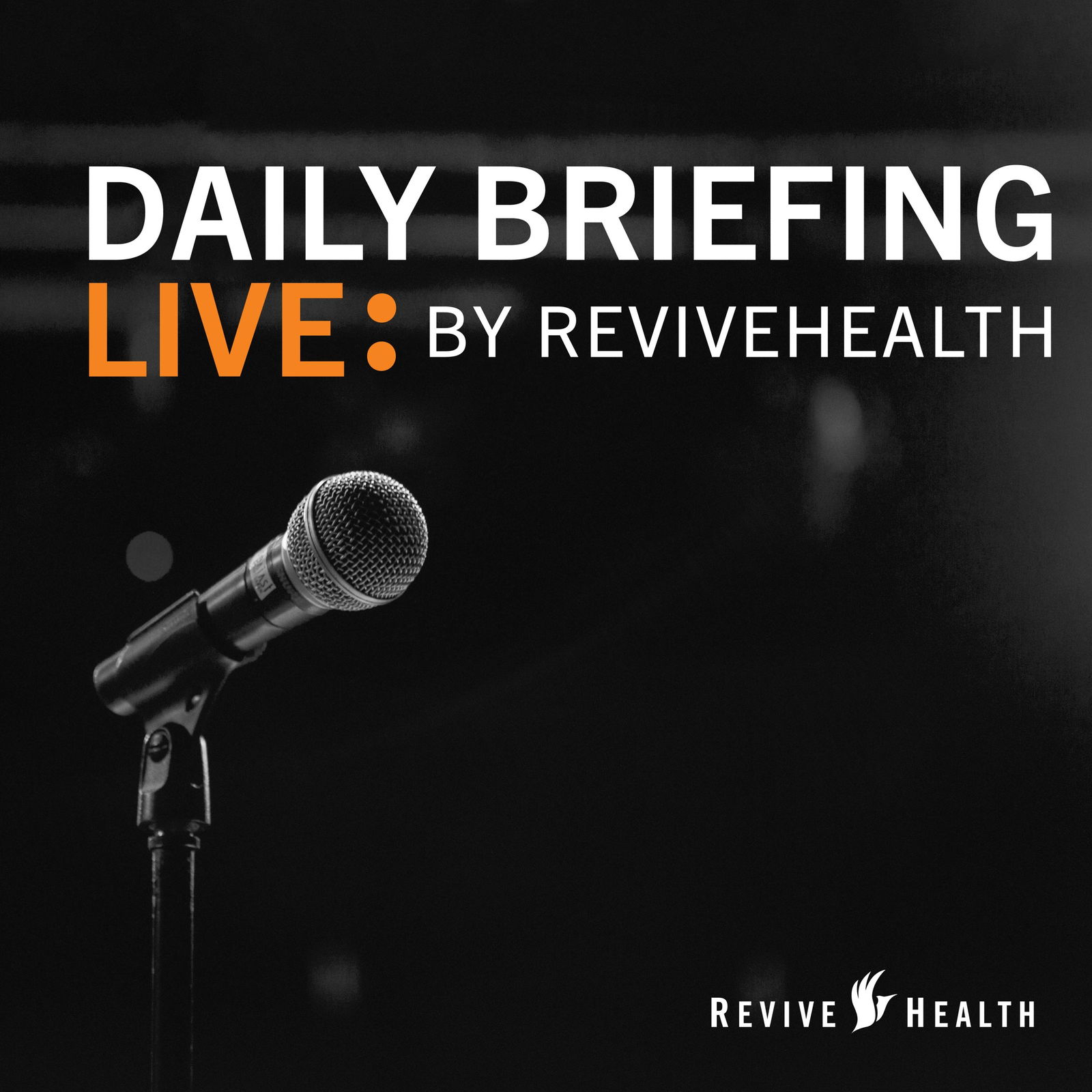
Daily Briefing Live – June 12, 2020
Resources Mentioned in Today's EpisodeVox Article: NPR Article predicted by June 6th we would be at 110,000 deathsYahoo Finance Article: Houston on ‘Precipice of Disaster’ With Virus Cases SpreadingVox Article: Arizona’s new coronavirus spike is worrisomeVox Article: Oregon pauses its reopening plans for one week after coronavirus cases hit new highToday Show Article: Coronavirus deaths could reach 200,000 by early fall, Harvard doctor warnsKey TakeawaysThe Daily Briefing Wrap Up Everyone seems to be talking about the idea of a "new normal." What are we going to do with the new normal, and when will the new normal hit? There's nothing that's going to look like normal anytime soon. Especially as we hear this is going to continue to the end of the year. It's more like "No Normal".This event we're going through is the same level as at least the Great Recession of 2008 and 2009, the Great Depression, and World War ll and the implications coming out of an event like this takes a long time to settle in.Looking back to the beginning of Daily Briefing Live At the beginning of the show, we were discussing what you call this thing, is it COVID-19? Now we know so much more, but there is still so much unknown. As far as a health system marketing team, there are many lessons that we've learned.We did a SWOT analysis of where we've seen the strengths, weaknesses, opportunities, and threats to marketing teams due to the current crisis, and that was an exciting conversation.The industry was at a level of uncertainty before, we were going through a profound transformation in the health care system, but it was kind of slow. This is like somebody poured a gallon of gas on that transformation.The first episode, when you were talking about what to call it, that was March 18th. We had heard about the coronavirus up to this point, but people weren't alarmed, then the NBA canceled a game. On March 12th, President Trump gave a speech, the NBA canceled their season, and Tom Hanks announced he tested positive.We started gearing up right away. We set up the podcast, and our first survey was released on March 21st. We found with research that 65% of people didn't know how to get tested. 42% of people surveyed had not heard of telehealth.March was a whirlwind, and I remember when we moved into April thinking "good riddance to March," but my feeling about April was that it was way darker.At the beginning of April, we started seeing a couple of stories about the financial impact on hospitals. On April 2nd we released the idea of rapid recovery and realized the financial hole this event is causing.April 4th, we released our second survey findings, where we started to come to grips with the idea that one of the challenges to rapid recovery is consumer fears.40% of consumers were saying it would take 3 to 6 months to get back to normal.64% of consumers wanted to hear from their hospital at least once a day.In May, it became apparent that this is a big deal, and it's not going away anytime soon.We had somebody from a southeastern health system come on our other podcast and reported they had 25 DOA's in April 2019, and in April 2020, they had 50 DOA's. So they had doubled their DOA's from people not going in to receive care, and that was just another sign of the delay of care that fear was prohibiting people from going into a hospital.The story of May was the loss of revenue from hospitals. On May 12th, it was reported that health systems are losing $60 billion a month.We realized primary care was being affected, and if we apply that same thinking to other up funnel encounters down the road, we're going to have what we started calling the missing domino effect.You knock over the primary care domino that knocks over the diagnostic imaging domino that knocks over the specialist consulate domino, which leads to the surgical domino. If you take away some of those initial domino's, the surgical domino never falls.We started hearing from clients that people were coming back into the hospital because they put off severe health conditions, but our pipeline two or three months down the road plummets.
31:3013/06/2020
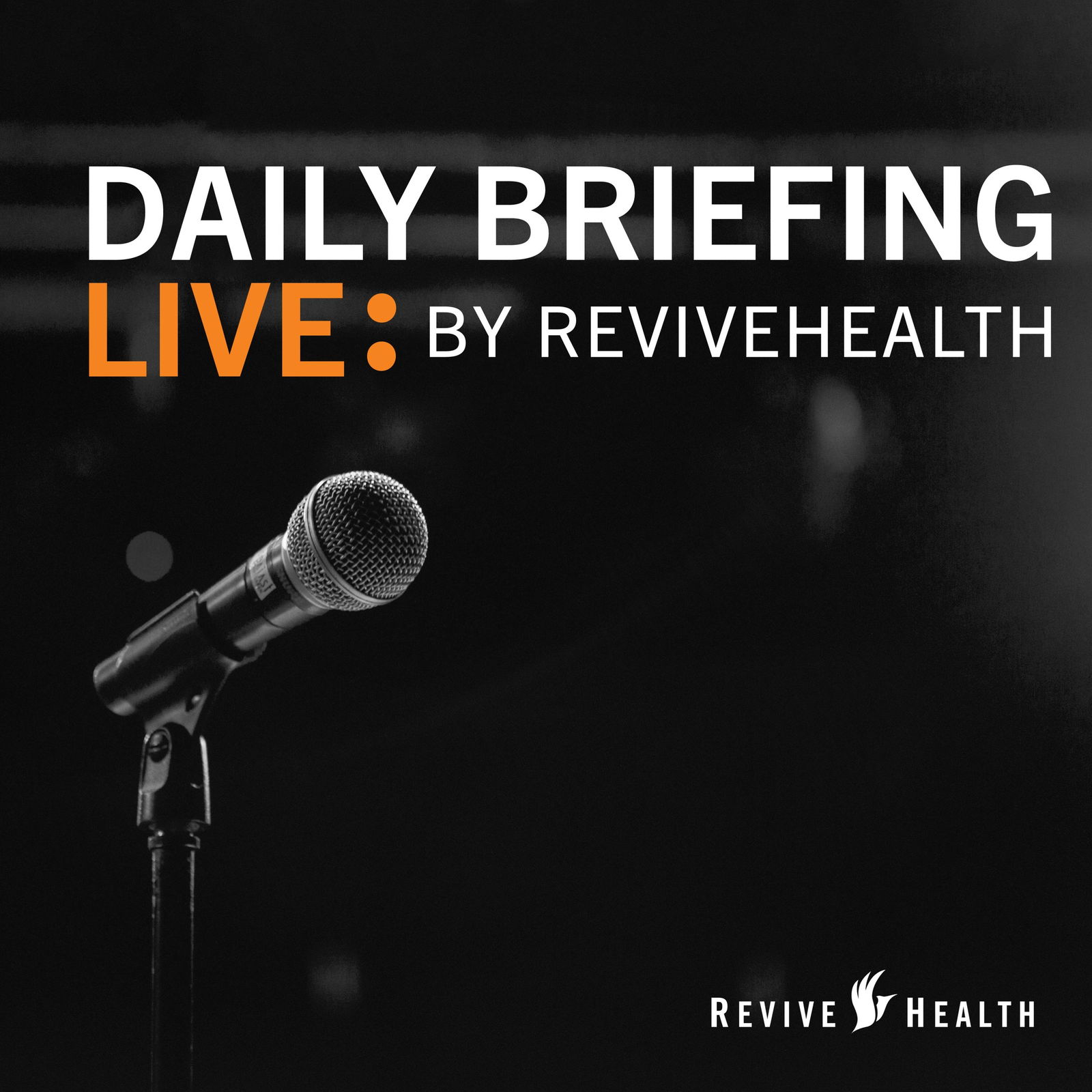
Daily Briefing Live – June 11, 2020
Resources Mentioned in Today's EpisodeBeckers Hospital Review Article: How COVID-19 is changing hospitals' marketing strategiesWashington Post Article: No Deaths and an Army of Hospital Workers Ready to Fight: A Rural Town’s Prescription For a Nation Weighing What’s NextHarvard Business Review Article: How One Health System Is Transforming in Response to COVID-19Key TakeawaysGeisinger's Marketing Messaging The communications function has pivoted just as the organization has pivoted to reopen.Pennsylvania has created a color-coded reopening system.One of the hurdles is safety, so we're trying to reinforce that message while supporting operations and clinical teams, and ensuring that we're getting people back appropriately.Keeping People Informed and Ensuring Operations Continue We pivoted as we shut down non-emergent procedures and closed down many clinics.We provided a prevention message about COVID-19.We were ready as a department to support efforts with marketing materials.Distributing Internal and External Communications Many of our surrounding households have a Geisinger employee in them, so we have to be very thoughtful about our internal communications from that perspective and think through the community impact of every decision.Pivoting into a Crisis with New Branding Our new brand message explains why we do what we do, which is what I believe is the essence of a good brand.We did some hard work in 2019 and finished around the holidays.We launched it around our core essence that we're not just about health care; we're about total health.Brand Evolution in a Post-COVID-19 Environment As a health system in a rural area, we can't postpone needed care — even in a pandemic.Some things were postponed that were not life-threatening in March that became life-threatening in May.As we move into a potential second surge, we need to be clear about what care our communities still have access to.Geisinger Moving Forward We saw increased interest in internal communication utilization, so we're going to try to figure out a way to keep that traffic level up through our intranet, push communications, and email.We did some experimentation with multicultural marketing because we have pockets of predominately Spanish speaking communities that were not receiving communications.We were seeing them show up in the ED without much information, so we created an infrastructure to support those communities moving forward.Utilizing virtual meetings can promote our organizations either from a paid or an earned media perspective.
31:3012/06/2020
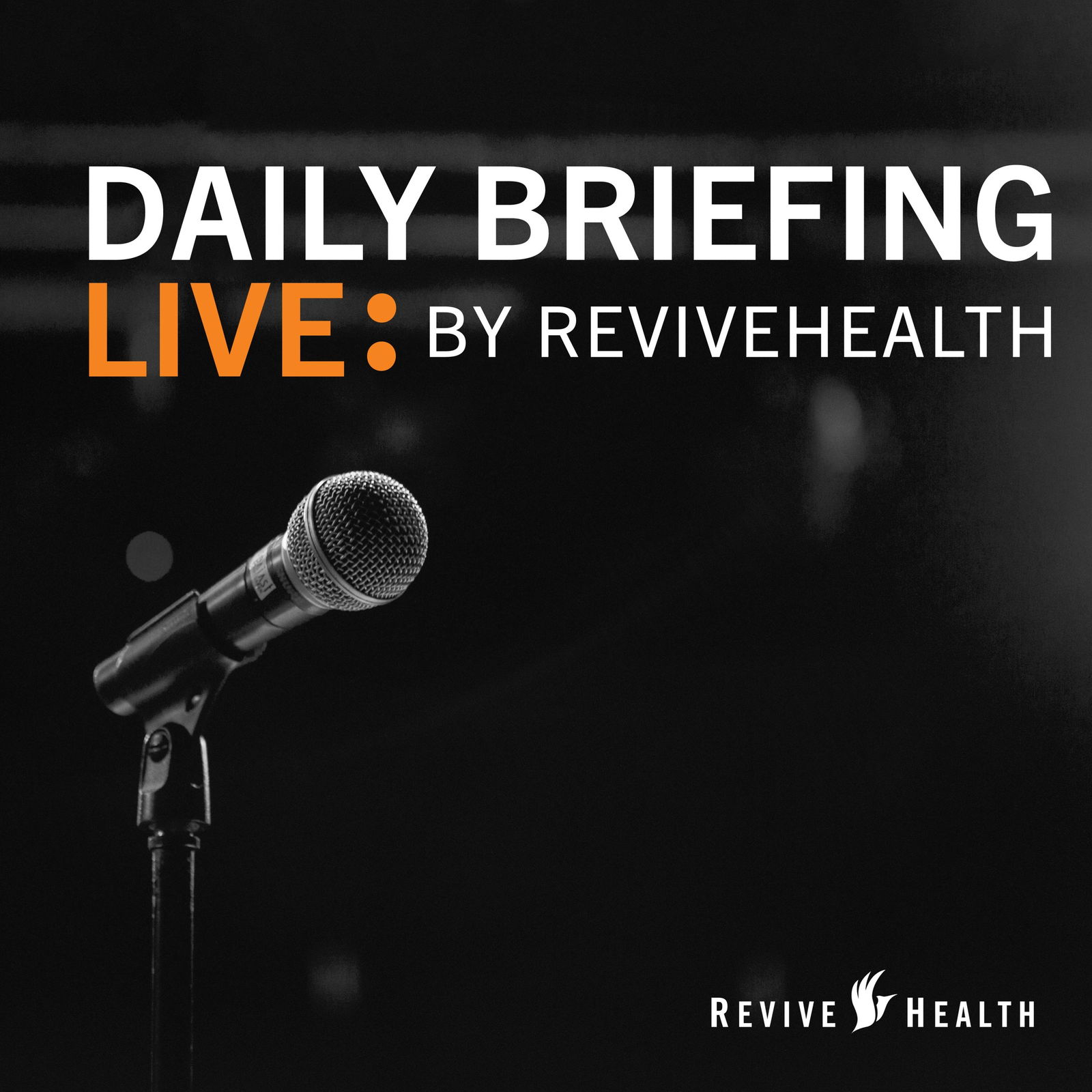
Daily Briefing Live – June 10, 2020
Resources Mentioned in Today's EpisodeMcKinsey & Company COVID-19 Response CenterMcKinsey & Company Research: Helping US healthcare stakeholders understand the human side of the COVID-19 crisis Key TakeawaysMcKinsey & Company ResearchOur research focuses on the person as a whole, to understand how COVID-19 has affected them. There has been an improvement since March, but there are still 53% of respondents in our latest survey who felt they were either anxious, depressed, or both. The data shows levels of anxiety and depression increasing for individuals in their mid 80’s.From this, we can see that the age group that has the most need is experiencing the most distress out of the entire population.We’ve seen that 70% of individuals are accessing care for their mental health through telehealth during this time.12% of people have either lost their health insurance or are about to lose their health insurance.20% of individuals report they haven’t received communications from their healthcare provider.Proactive outreach from their healthcare provider was the most significant indicator of how to get consumers to receive needed care or come in earlier for their care12% of consumers have not gotten the care they need due to:Not feeling safe in in-person environments.No exposure to telehealth.Other.How to Support ConsumersIt’s essential to think about the design of your benefits so that people get care when they need it.Consumers are requesting copays and deductibles to be waived for COVID-19 testing.There’s an opportunity for providers to explain what costs will include upfront so that they can set up a payment plan or reduce the amount for patients during this time of transition.
28:3411/06/2020
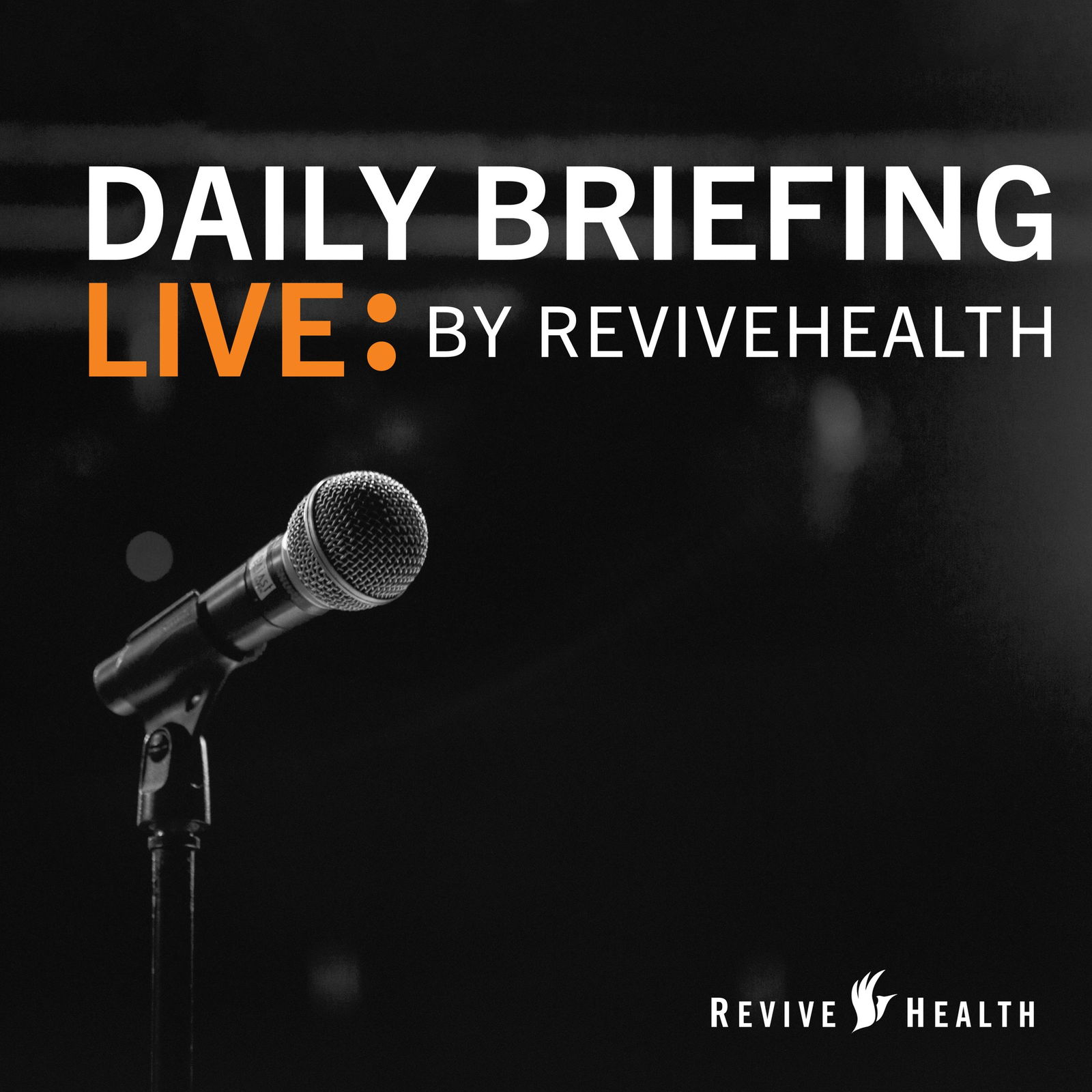
Daily Briefing Live – June 9, 2020
Key TakeawaysPost-COVID-19 Marketing SWOT ReviewStrengths:The speed of digital/content development was incredibly fast for some organizations.Internal comms kept team members informed and confident in key issues surrounding the health system regarding COVID-19.Public/media relations (unfortunately, this was also a weakness for some health systems).Using scenario planning to get ahead of issues.Using consumer research to inform the organization's conversation about messaging.Adjusting to the remote working environments.Working with physicians - we've seen some health system marketing teams make giant gains here.Weaknesses:Tech stacks weren't able to give us fast enough information to communicate with patients.It can be challenging to get approval quickly.Marketing, operations, and leadership were/are not aligned.Lack of understanding of clinical patient engagement.Personalized and coordinated multichannel outreach struggled to scale.Opportunities:Maintaining virtual health - a tremendous new CTA to attract new or engage existing patients.Extending current campaigns into something your brand stands for.Making things easier with a clear priority.Enhancing the understanding of consumer segments (both overall value to the system and at a service line level).Threats:Budget concerns.Team member burnout.Consumer trust/mistrust.For example: We heard today from a nurse that patients that are returning after delaying care are unhappy because of the severe consequences as a result of that delayed care.
38:2810/06/2020
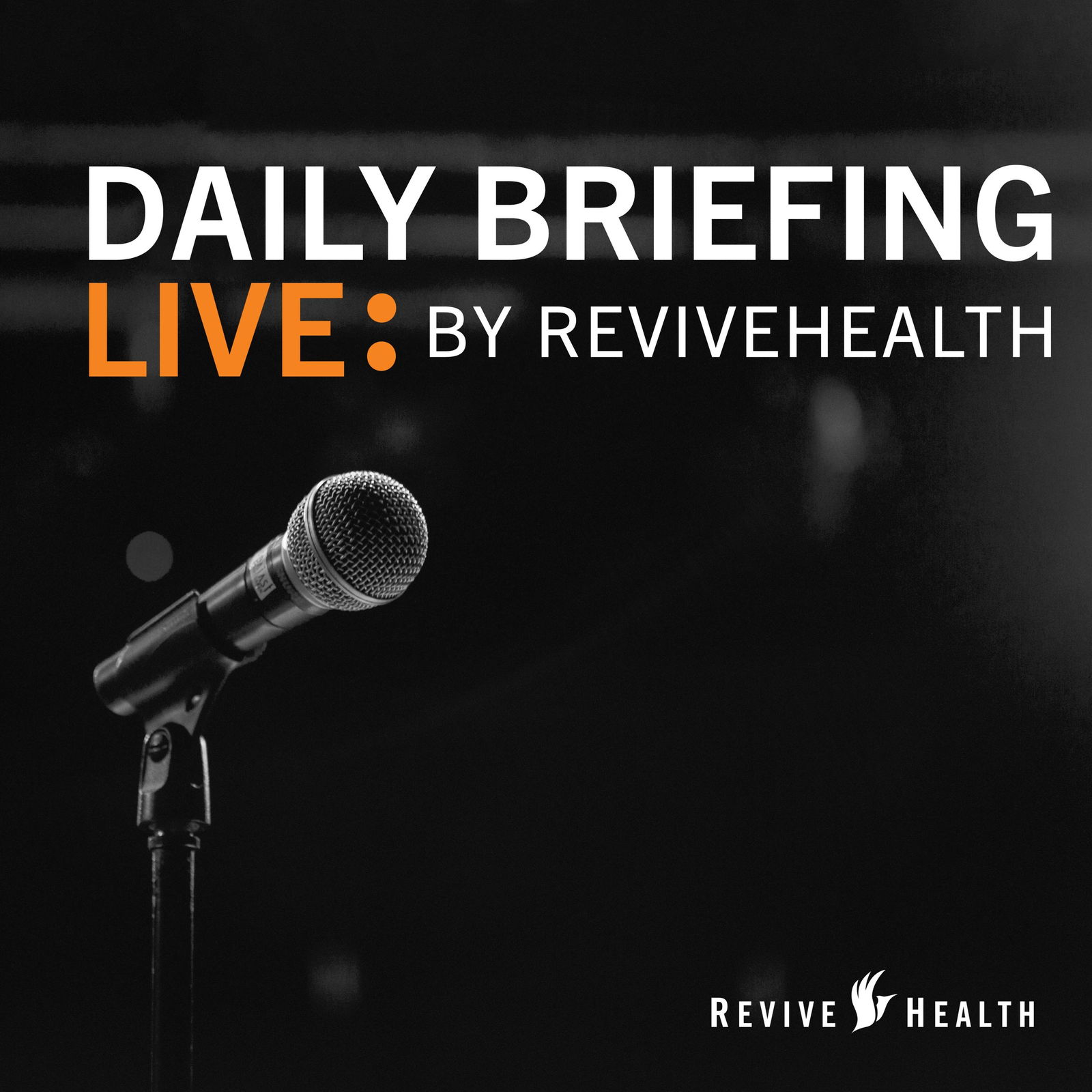
Daily Briefing Live – June 8, 2020
Resources Mentioned in Today's EpisodeNational Law Review Article: Proposed California Legislation Would Require State Approval for Health Care M&A and Prohibit Use of Health Care Market Power to Raise PriceCalifornia Healthline Article: California AG Seeks More Power To Battle Merger-Hungry Health Care ChainsThe Bond Buyer Article: Two Big Midwest Hospital Mergers CanceledKey TakeawaysExamples of canceled M&A plans.Michigan-based Beaumont Health and Ohio-based Summa Health called off their plans to form a $6.1 billion system after a definitive agreement was signed.Several South Side Chicago hospitals had planned to join forces as part of a $1.1 billion project that included building at least one new hospital and up to half a dozen community health centers.For communicators who are part of a system moving forward with M&A plans or are considering looking for a partner.Emphasize how the proposed transaction will maintain or improve either quality or affordability, ensure access to care for communities, and address the financial challenges faced by health systems as a result of the pandemic.Articulate how the M&A activity will stabilize affected health systems — allowing them to manage the COVID-19 crisis and future pandemics.Speak to audiences in terms of value to all.Center the messages around things like improved quality and stabilization to create a sustainable future in providing care for the community.Communicate messages of job creation and facility creation.People are concerned about job losses with M&A. Think through reactive messages within that context.Highlight how these partnerships will facilitate continued care in a market, which otherwise might lose a valuable healthcare resource.Share positive economic benefits the transaction will bring for local communities.Communications that support the vision, rationale and benefits of a deal will also need to be relevant to the regulatory bodies whose approval may be required.Ensure stabilization where there is only one healthcare agency within the community.This goodwill can be valuable as health systems seek stakeholder and community support for their transactions.Public perception and support of healthcare providers have been extremely positive during the pandemic to date, as evidenced by homemade banners, balcony tributes, and praise on social media.Health systems and their staffs have borne personal risk and financial pain by focusing on patients and public health at the expense of all else.But that goodwill can also be quickly forgotten.As health systems race to the altar to beat out competitors for M&A targets and other strategic relationships, it is critical that they are thoughtful in structuring their deals and justifying the activity.For example, acquisitions and partnerships involving lucrative executive compensation or severance packages will be viewed negatively if undertaken by a system that instituted large compensation reductions across the system or even furloughed or laid off employees during the pandemic.Internal communication has never been more important.We always counsel clients to focus on internal audiences first when announcing an acquisition.But this is even more critical right now since staff have been working tirelessly to treat patients with COVID-19 as well as recover financially from the last few months.Any effective communication plan will need to clearly articulate the benefits to staff and allay any fears of layoffs.
30:2009/06/2020
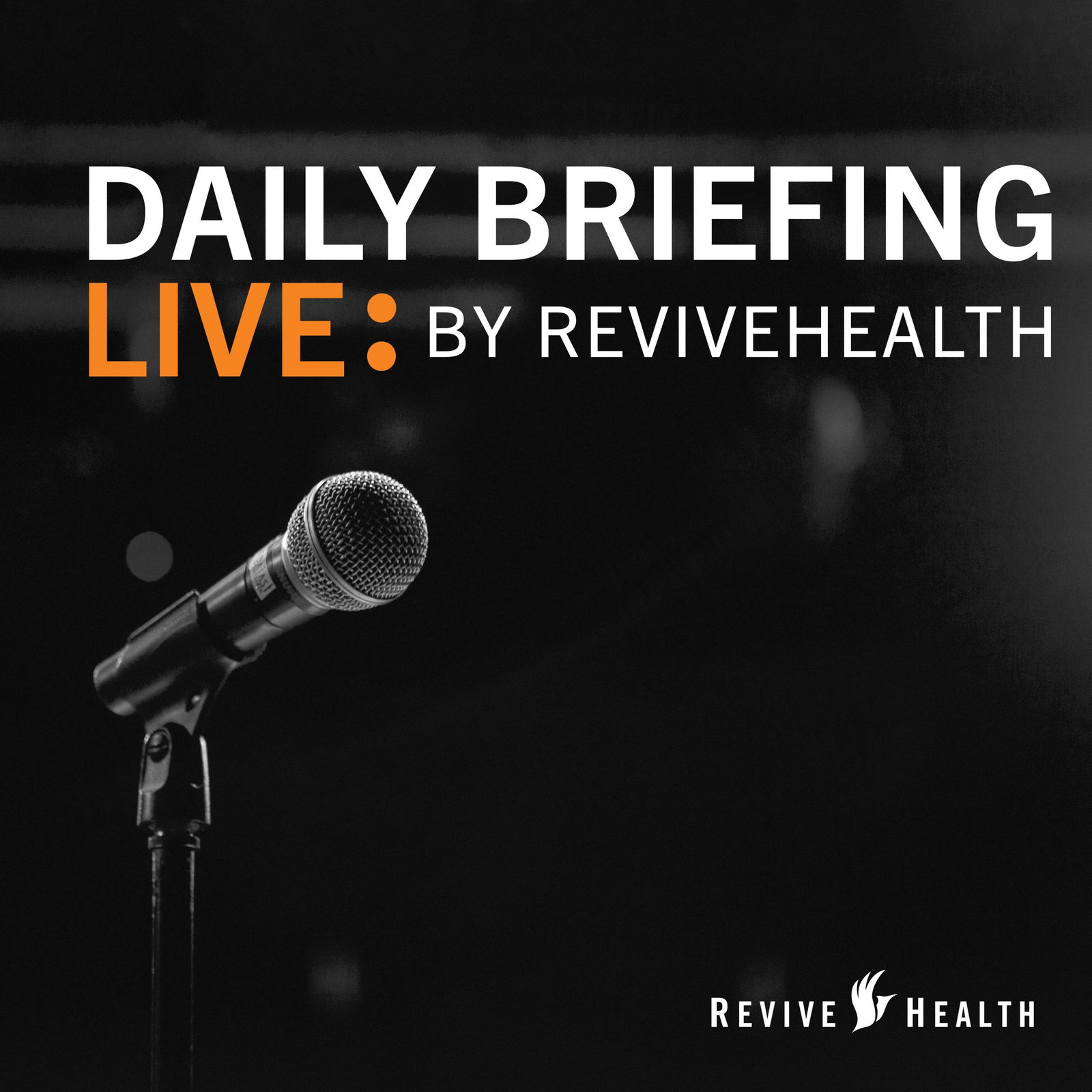
Daily Briefing Live – June 5, 2020
Resources Mentioned in Today's EpisodeKaiser Family Foundation Article: Opportunities and Barriers for Telemedicine in the U.S. During the COVID-19 Emergency and BeyondBrookings Article: Removing Regulatory Barriers to Telehealth Before and After COVID-19U.S. News Article: The Coronavirus Pandemic and the Transformation of TelehealthCredit Suisse Study: Telehealth Industry: Beyond the PandemicKey TakeawaysTelehealth - what should we call it?We see telehealth, telemedicine, and virtual medicine used in the majority of industry dialogue right now.It can be confusing when organizations define it in different ways.The World Health OrganizationTelemedicine services are administered by physicians only.Telehealth is a little broader, so its services are administered by a variety of different care providers.The U.S. federal governmentTelehealth is a broad swath of remote healthcare services, not even entirely clinical.Telemedicine is specific to the remote delivery of clinical care.The utilization of telehealth.Several barriers have prevented the adoption of telemedicine.While many employers report offering telehealth to employees, a large number of consumers are unaware that they have access to it.How many providers can be compensated for telehealth versus in-person visits?There have been several restrictions temporarily lifted during COVID-19.FederalWaived HIPAA requirements.Waived out-of-state licensing.State by stateLoosened privacy laws.Waived out-of-state licensing requirements.Expanded Medicare programs.The implications for health systems and hospitals.I would expect that states will more permanently wave a lot of in-state licensure requirements.What will not continue after COVID-19 is the use of non-HIPAA compliant technologies.The service and payment area are still undetermined about what will stay and what will cease after the temporary lifts have concluded.A patient is going to be looking at multiple options for how they want to receive care virtually.As health system marketers look to prioritize their own telehealth services, they must approach communication with even more rigor, targeting tactics, and educational messaging than their health plan counterparts.The impact of consumer perception on telemedicine adoption.Consumers are still afraid to go back into hospital settings.They've become comfortable with telehealth, so demand is likely going to continue.
25:3809/06/2020
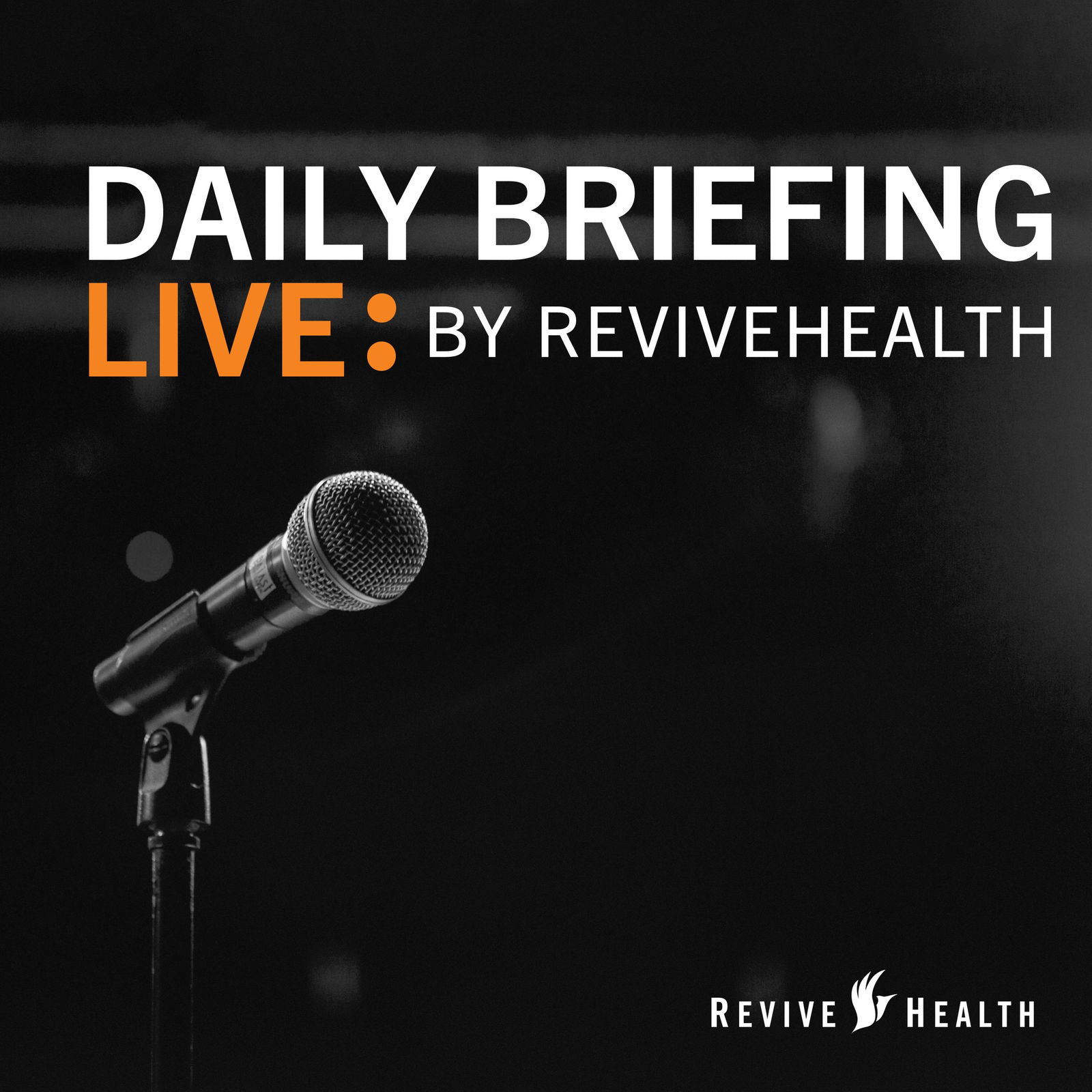
Daily Briefing Live – June 4, 2020
Resources Mentioned in Today's EpisodeCNN Article: US should have a 'couple hundred million' doses of a Covid-19 vaccine by the start of 2021, Fauci saysThe Atlantic Article: We Don’t Even Have a COVID-19 Vaccine, and Yet the Conspiracies Are HereAdvisory Board Feature with ReviveHealth: Q&A: The right (and wrong) ways to talk with patients who are frightened to seek careKey TakeawaysTakeaways from Rapid Recovery in Health SystemsPatient engagement and personalized messaging have been a significant focus.There has been a lack of critical patient communications included in the reopening plans of many health systems. This is often due to limitations regarding consumer targeting. Limitations we’ve seen:Recent adoptions to CRMLack of a sophisticated CRMLimited ability to work around automated marketingLearning the consumer in this new climate is crucial to patient retention.Consumers are wanting detailed information explaining how hospitals are going to keep them safe when they show up to their appointments.Consumers’ frequency of hearing about COVID-19 has shown to be an essential factor in our research.Messaging Matters – Our Recommendations We need to keep in mind who is delivering our messages.Physicians are our biggest advocates, so we need to support them by keeping them informed by not leaving them off our communication plan.Cross-functional alignment with health systems and marketers is crucial so that marketers can adequately adjust how we are marketing and how we are communicating with patients.Forcing Function for SystemsCOVID-19 provided a silver lining highlighting the need for tools that have been on the health systems marketer’s wish list for many years.There’s been a significant increase in telehealth adoption, which is more convenient, less expensive, and overall provides better clinical care. The rise of martech capabilities and toolsImproving personalized marketing and consumer targeting Smarter service line prioritization
30:1306/06/2020
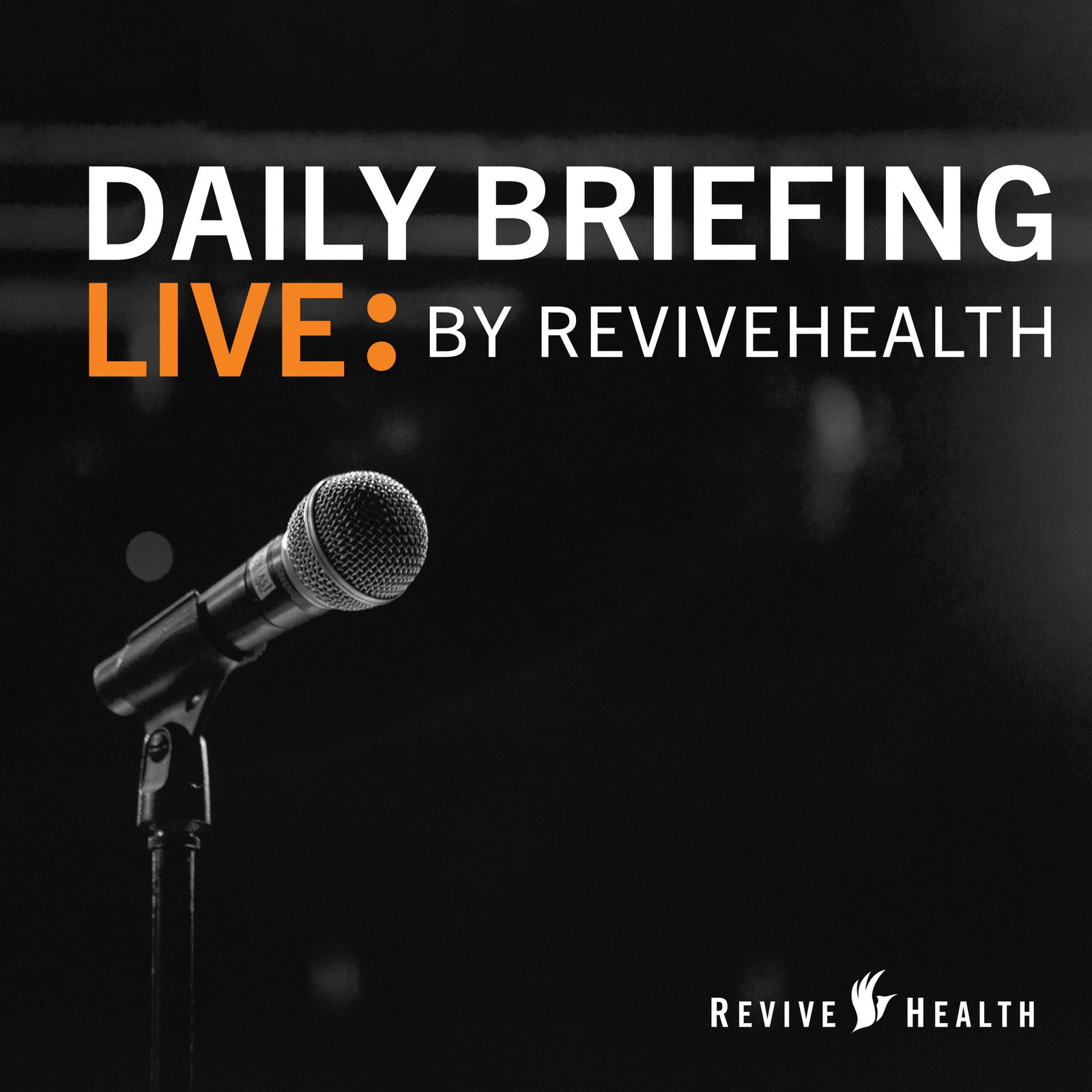
Daily Briefing Live – June 3, 2020
Resources Mentioned in Today's EpisodeAmerican College of Surgeons COVID-19 ResourcesKey TakeawaysEmpowering Surgeons as Surgery Schedules Ramp UpThe work marketers and communicators are doing to spread the message of it being okay to come back to hospitals is crucial in easing fears and preventing people from delaying needed care.It’s on us to inform and empower surgeons so that they can meet the fears of those receiving care.Surgeons have been incredibly willing to take the steps necessary to make their patients feel comfortable.National and international organizations are helping surgeons by offering locally relevant resources to ease the additional responsibility of surgeons trying to earn trust from patients to come back into their hospitals.Handling Surgery Friction Caused by Pent up DemandFinding ways to ramp up surgeries that work well for the institution, the surgeon, and the patient creates points of friction.Clear communication is crucial in navigating this time.Elective and Nonelective SurgeryCOVID-19 has brought to light an issue in the impact of language and terms relating to how patients think about surgery.The pausing of elective surgeries during this time has caused a significant impact on patients that delayed care and are in crucial need of it now.
29:1204/06/2020
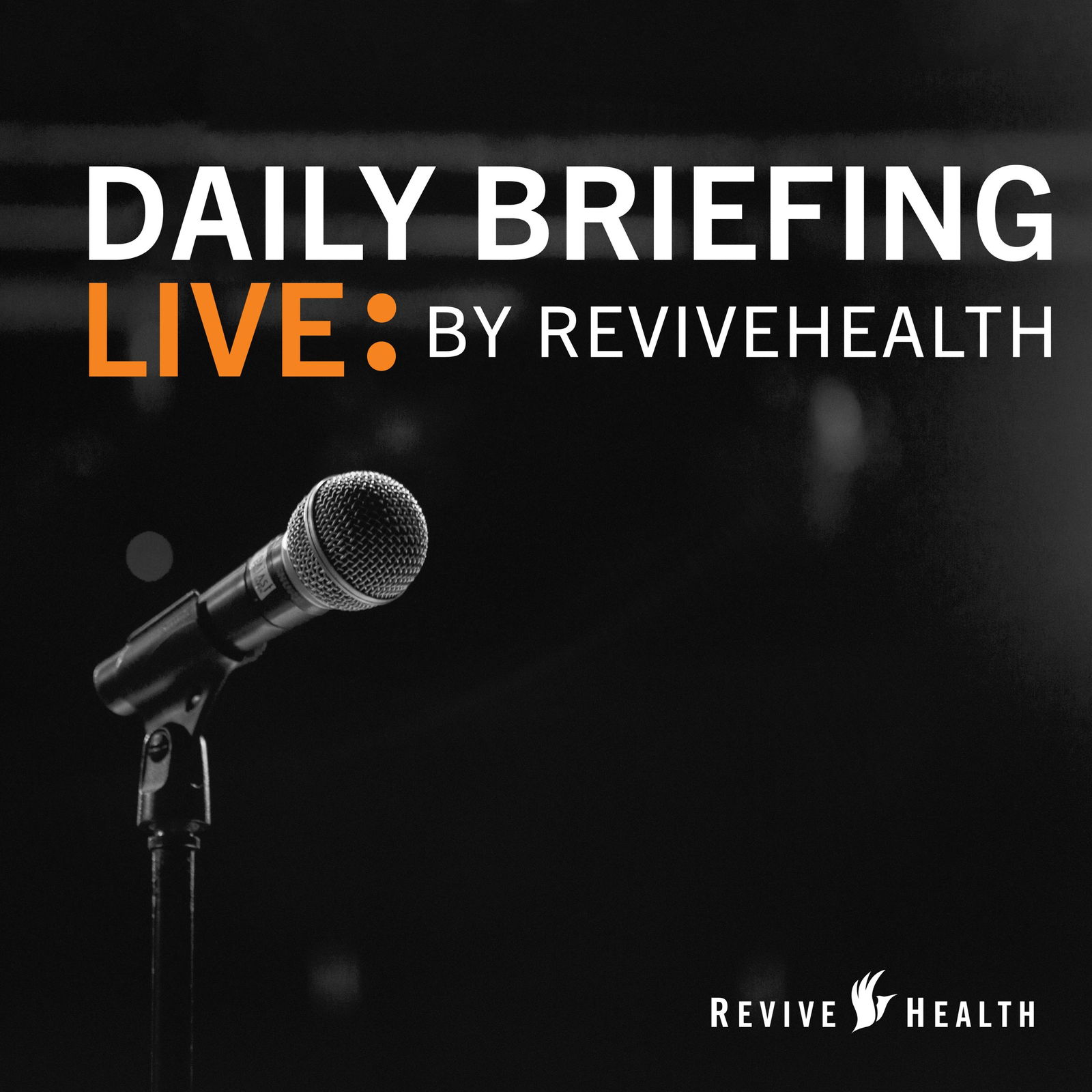
Daily Briefing Live – June 2, 2020
Resources Mentioned in Today's EpisodeHealth Affairs Article: Inequity: Society’s Most Important Pre-Existing ConditionHealth Affairs Article: Inequities Amplified By COVID-19: Opportunities For Medicaid To Address Health DisparitiesKey TakeawaysCincinnati Children's Community OutreachWe're trying to not only identify where the disparities are, but also get beyond just describing them.We're trying to figure out what pathways are creating them and who are high-leverage partners in the community to address this.We've worked to take our quality improvement work from inside the hospital and bring it out into the community to help guide our partnerships and work collectively with multiple institutions to address child health disparities.Whatever we redesign must be consonant with their issues around trust and value.The Importance of Trust Right Now We work closely with our partners in community relations because it's critical in building sustained dialogue directly with our communities. It's important to bring families directly into our planning circles and execution circles in order to guid us along the way.Delivering results is the most crucial aspect of building trust.The Disproportionate Effect on Vulnerable Communities Mortality and case rates are roughly double in minority communities.Potentially because a segment is at increased risk or there's diminished access to effective treatment. The day we get a highly effective vaccine, the greater the opportunity for huge disparities to arise.There's an increased risk of exposure in the occupations they have, less ability to stay home and protect oneself, and less access to protective equipment. Additionally, access to testing is increasingly looming as a challenge for prisons, domestic violence shelters, and dense housing complexes. The Importance of Communicating to All CommunitiesThere's right content, myths, and messages to get out to the right spokespeople.You then have to decide what format and distribution channels will help you reach these diverse audiences in your region.To help, you should partner with community influential community members.The Diversity of the Cincinnati Community40% to 50% are African American.30% to 40% are white. 5% to 10% are Latino (rapidly growing).Effective Ways to Reach Disadvantaged CommunitiesFood insecurity is a tough topic for most institutions, so it's assumed that many cities face lost jobs and food insecurity. The Cincinnati public schools quickly opened up 24 meal delivery sites, and we have a standing relationship with the public schools around their education work. We partnered with them around those sites and focused on:How do we let them be the infrastructure in a platform around food, but how do we partner with them and bring health information into that space and then not just health information.Common ObstaclesOne risk of engaging in the food insecurity space would be the failure to communicate your purpose correctly. As you try to work in a vulnerable neighborhood, you should find out who the internal stakeholders are and who needs to be engaged.Advice for Marketing and Communications LeadersI think it's an excellent opportunity for us to engage our communications experts with people at the furthest reaches of the front lines and harvest or crowdsource the problems we're seeing. You want to make sure you're hearing from front-line innovators as well and see if you can get them involved. Don't let this fall off your radar This type of work is an opportunity to build for the next 10 years.The value premise, as many of us are shifting from volume to value-based payment, is keeping families healthy. It's all the more reason to make this upfront investment now in addressing health disparities and communicating well.The Focus on Inequity and Vulnerable Communities at Cincinnati Children's Our CEO and our board chair not only care passionately about the issue, but they also take time to work with internal communications to make sure that that message gets out internally.Getting other hospital leaders to understand that about 25% of our population is well below the mean can help get them on your side and buy into the strategies and efforts you're putting in place.
30:0903/06/2020

Daily Briefing Live – June 1, 2020
Resources Mentioned in Today's EpisodeAPM Research Lab Report: COVID-19 deaths analyzed by race and ethnicityCarePort Health COVID-19 HubKey TakeawaysCarePort Health We added a survey to our platform, asking post-acute providers if they have the equipment to care for COVID-19 patients or have COVID-19 patients in their care.We found that only 6% of nursing homes can care for post-COVID-19 patients. Building rapport with health system leadershipWe’re a small team that strives to be nimble. Our most significant change since we’ve been home is to over-communicate. Our focus is to insert ourselves into the conversation in a way that is helpful.Focusing on following up and providing the next steps to the leadership team is my current way of touching base.I’m providing the sales team with a weekly wrap up, and the entire company a monthly email explaining the marketing and sales team’s happenings, so it gives everyone a look at what we’re doing.We’re holding townhalls more frequently so that everyone can connect and touch base.CarePort Health Covid-19 HubWe’re generally trying to reach people in the healthcare realm. In this instance, the data has a much broader application. We’ve created this COVID-19 hub to provide helpful information to inform customers and consumers.
29:2402/06/2020
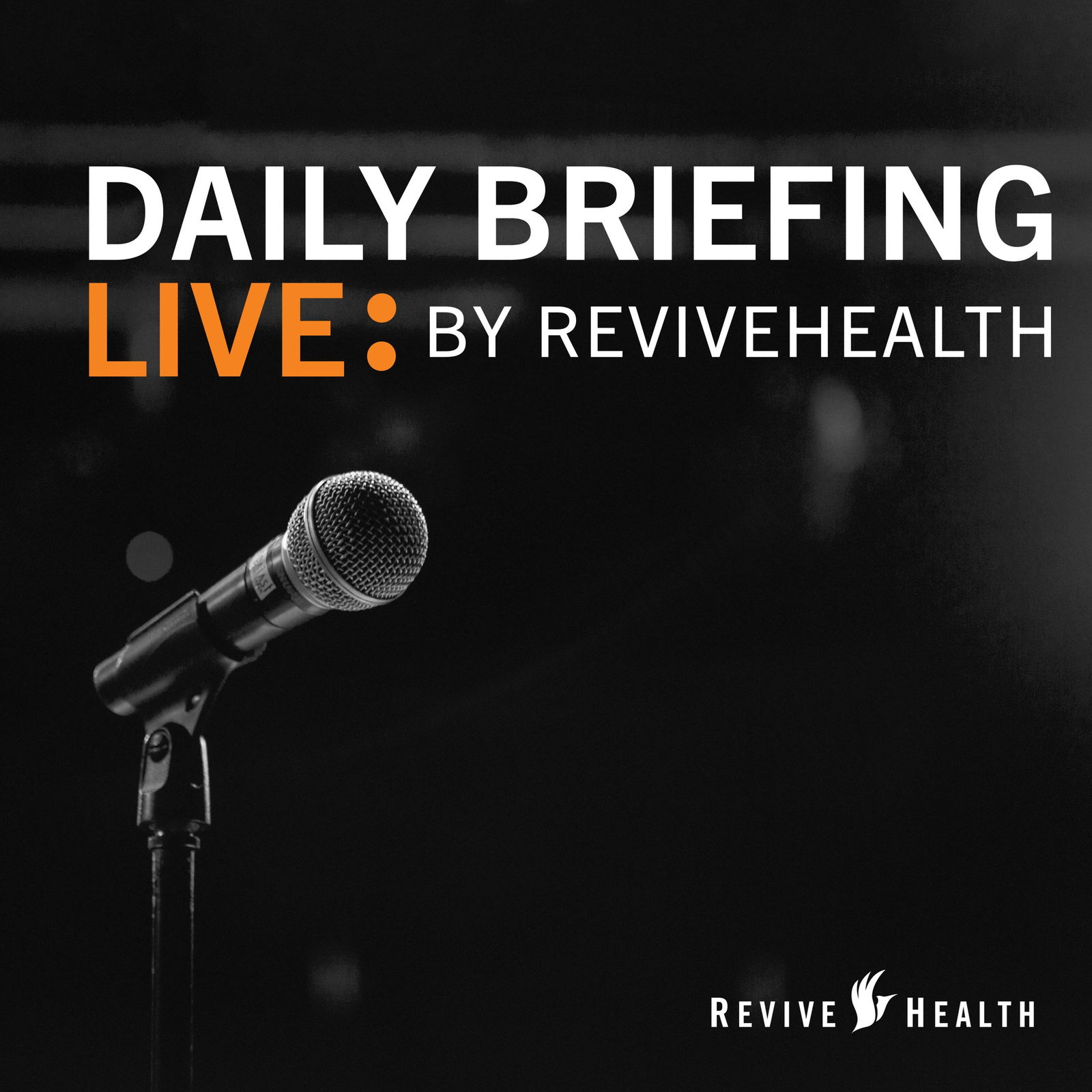
Daily Briefing Live – May 29, 2020
Key Resources Mentioned in Today's EpisodeRev Cycle Intelligence Article: Volume Declines Drive Hospital Operating Margins Down 282% in AprilKey TakeAwaysSalinas Valley’s Crisis ResponseWe were seeing people put off critical care and recognized the need for us to communicate that it’s safe to come back for care.Once we started reassurance messaging, we saw an increase in patients around mid to late April.In the last couple of weeks or so, we’ve restarted our scheduled surgeries processing again.Salinas’s unique experience during the evolution of COVID-19?There’s a sizable agricultural history here. We call it the salad bowl of the world. We provide a large number of provisions to the entire world.There are thousands of employees living and working in very close conditions, so we started seeing cases appearing.We wanted to focus on a strategy to help educate these workers:We’ve sent our nurses out to the fields to conduct training with workers about sanitation at the worksite and home. We’ve also donated masks.We’ve always focused on our cultural understanding of our care, but we’ve tried a few new tactics during this time:We provided a Facebook live with a Spanish speaking physician and had a peak of over 800 viewers join the livestream.Scheduling Surgeries Before implementing the process, we spent a couple of weeks figuring out what it would look like. We asked: How do we test the people a couple of days before they come in?How do we give them instructions to isolate between that test and when they’re coming into the surgery? We started by conducting a few surgeries with the process to see how it works, and then Tuesday of this week, we started ramping up. In terms of communications and marketing, we started internally and made sure that our employees knew exactly what we were doing and started putting the message out externally.The "Be Well" CampaignPeople need a message of what they should be doing. So, we’re looking at a traditional brand-level campaign that gives people some options on how they can stay connected. The idea is to set the stage for people to start thinking about health care again and start thinking about how we want to support them. It’s important to provide high level messaging that’s more aspirational, and then other messaging that is more specific to interactions. The Campaigns EvolutionThere wasn’t enough time for detailed focus group testing. So, we were able to get some input in different ways. It’s important to keep connections in place, even as some of the restrictions start to lift. It is essential to keep the campaign flexible because things can change in a matter of 30 days.
31:2130/05/2020
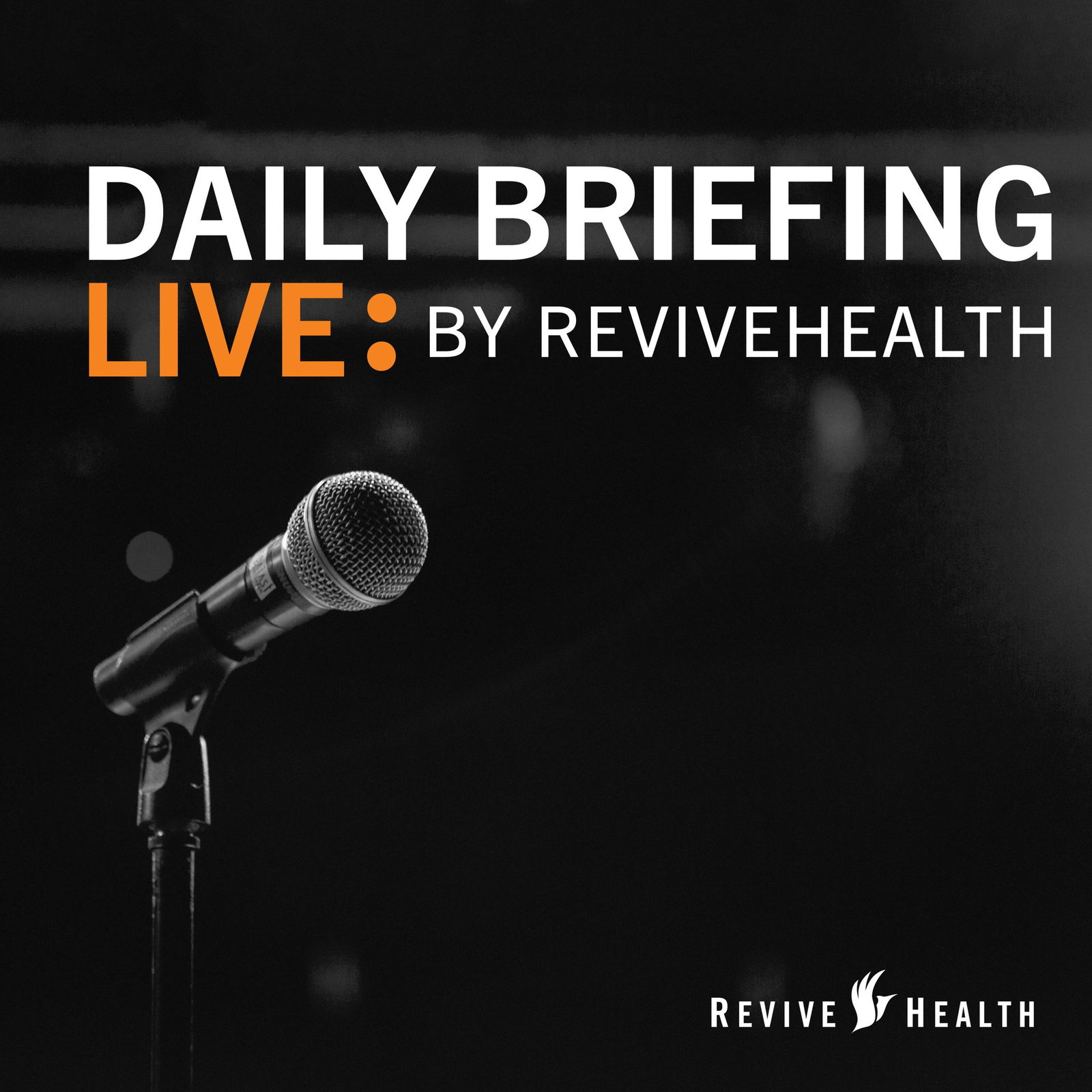
Daily Briefing Live – May 28, 2020
Key Resources Mentioned in Today's EpisodeRev Cycle Intelligence Article: 1 in 5 Hospital Execs Expect Revenue Declines of Over 30% in 2020Key TakeawaysTransitional MessagingWe're seeing a shift from safety messaging to communications about accessing care in a post-COVID-19 world.There's a lot of fear from clinicians and administrators to make up lost time from a revenue standpoint and get people the care they need.Timeline for Transitional MessagingThe next narrative health systems and providers should be conveying:It's safe to come back to healthcare.You should be getting the healthcare you need.Here are the specific service lines that are open and available now.We're going to move forward with reassurance messaging in the current market and evaluate every 30 days so that we can continue to be agile in our communications.Scenario Planning for a Resurgence We're looking at multiple scenarios with our clients. We're asking:What happens if cases spike in the summer?What happens if cases drop? What happens during the flu season?In some cases, we're using the same overarching brand campaign construct focused on personal safety, staying indoors, and wearing masks. Positioning MessagingWe're looking back and using successful past campaigns and putting the focus of the messaging on the community and off of us.We want to position our clients as leaders through a campaign that can not only be good for now but can also carry them through 2020 and 2021.Channel EngagementProvide a Q&A or some mechanism for people to be able to come in and ask questions.Virtual care and telemedicine are going to play a big part in this as well. We want to make sure that we are connecting to audiences looking for care in that modality.Transitional Messaging in LeadershipLeadership has been remarkably on board and enthusiastic about connecting and becoming more trusted by consumers and patients in the community.Tracking the NarrativeWe should focus on patient retention and getting the individuals whom we already know need care.As we step up as community leaders, this is an opportunity for patient acquisition.We're going to focus on how people are coming to visit the resources that we are providing. You should ask yourself:What kind of questions are they asking?What is the volume of questions we're getting through some of those channels?We are creating individualized URLs so that we can see from a digital standpoint what is working well with consumers.
29:3829/05/2020

Daily Briefing Live – May 27, 2020
Key Resources Mentioned in Today's EpisodeCNBC Article: Hospitals are rescheduling elective surgeries but worry about demand after the backlog is clearedThe New England Journal of Medicine Article: Where are all the patients?Our Qualitative Research Among Patients Awaiting SurgeryKey TakeAwaysThe Missing Domino The volume recovery that we're seeing constrained on the surgical side is also happening on the nonsurgical side. We're trying to focus on how to replace that missing domino if all the earlier dominoes fall. Surgical schedules are at risk of being anemic due to a lack of patients. Patients haven't seen their specialist, they haven't had diagnostic imaging, they haven't had lab work, and other crucial stepping stones that are necessary before surgery. Lower-acuity Services Rapid Recovery that's focused on surgical volume is only going to solve a short-term problem. It won't solve the longer-term volume of getting people back into those other services that could lead to higher margin surgical volume or different types of treatment. Higher Level Funnel Services Instead of starting at the very top of the funnel, we should begin with the part of the funnel that's just before surgery. You should ask: Who's had a referral to a specialist who hasn't had that appointment fulfilled? Who's had an appointment with a specialist but hasn't had their diagnostic imaging and their labs done? Who has preventive screenings that were scheduled that haven't been fulfilled? Building Patient Confidence We need to focus on the patient and where they are at emotionally. People are concerned about safety, cleanliness, and protocols, so we need to reassure them that they are safe with us. There's an opportunity to be substantially more personalized because we know the patients that have surgeries on pause will have referrals.We need to focus on streamlining their care so we can reassure them and meet them where they're at from a messaging standpoint. The Missing Domino Takeaway If you are not already pursuing a Rapid Recovery strategy that includes operations and marketing working hand in hand, start right now. You risk losing share to first advantage movers in your market otherwise. Focus on proactive marketing, physician relations, and physician engagement around reaching all of those patients that will eventually be surgical patients or patients in higher-margin treatment services. Start planning for fall and winter. If we don't prepare properly for the seasonal flu and a COVID-19 resurgence, the consumers and others might decide we're not able to handle the problem and could be forced into another shutdown scenario.
27:4928/05/2020
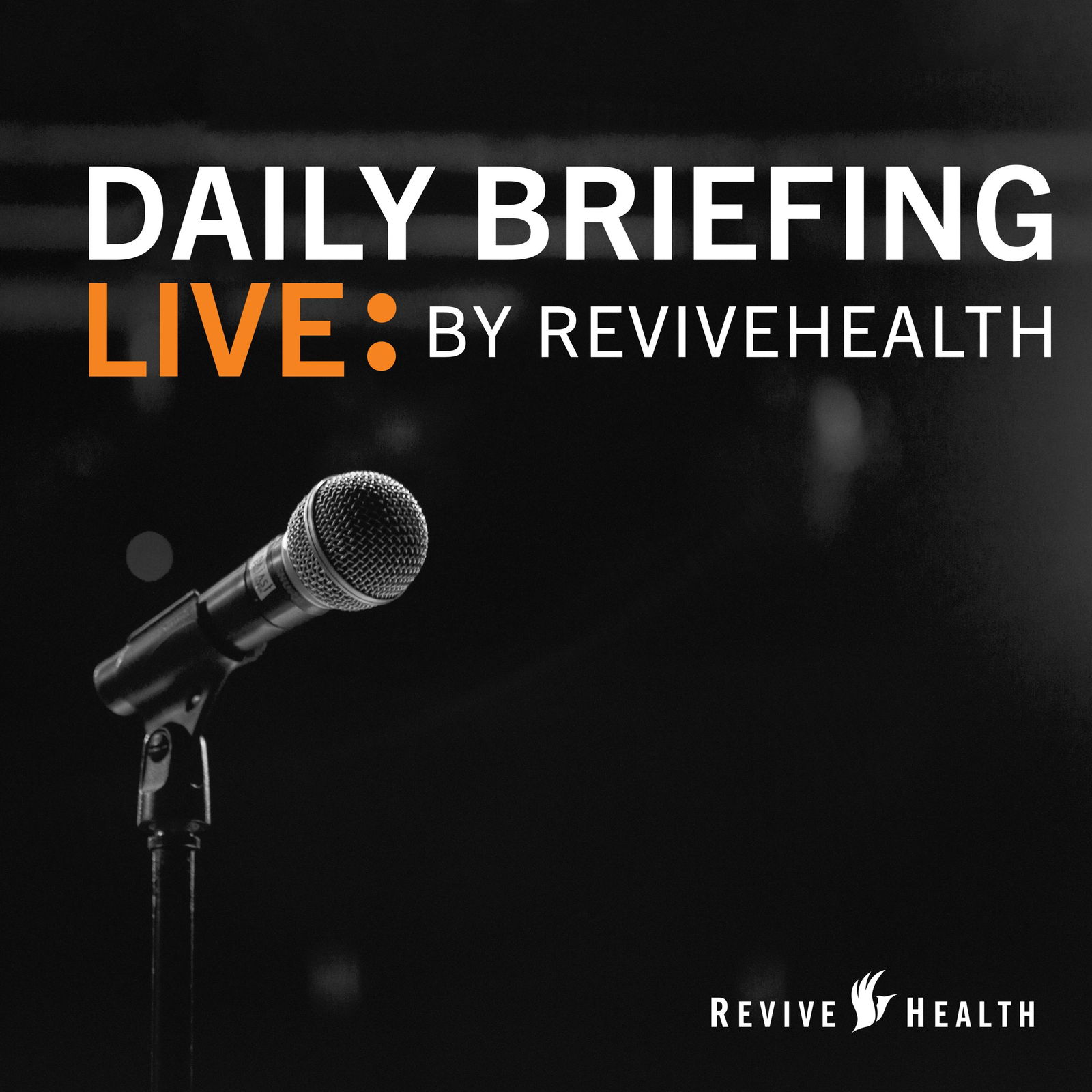
Daily Briefing Live – May 26, 2020
Key Resources Mentioned in Today's EpisodeReuters Article: Large employers push back on U.S. healthcare mergers during coronavirus crisisNew York Times Article: The Public Has Been Forgiving. But Hospitals Got Some Things Wrong.World Health Organization Article: More than 117 million children at risk of missing out on measles vaccines, as COVID-19 surgesKey TakeAwaysComing out of Memorial WeekendIt's important to keep in mind that we've flattened the curve, but we're not out of the woods yet. Health systems and marketers need to reiterate to their community the importance of social distancing and personal hygiene.How to Prepare for a Second WaveHealth systems should do some research and polling to gauge if the public sentiment about their hospitals has gone up or down.Health systems need to evaluate what's been done in the past so they can prepare for the fall. They should ask:How have we rolled out communications for past flu seasons?What's the plan of action if we have to contend with the flu and COVID-19?What does this all mean for testing capabilities?How do we roll out communications and recommendations for the public?M&A ActivityA variety of large employers are pushing back against M&A activity due to fears relating to a lack of quality care and higher costs.Large systems might be predatory toward smaller systems that are in need of financial support.The Impacts of Delayed CareOne hundred million children are unable to receive the vaccines due to delayed care.We have to consider pediatric public health and its relation to vaccines and make sure we're communicating with parents.It's important to communicate with at-risk groups to make sure those children are receiving care.Marketers should consider the high number of unemployment figures we're seeing during this time and recognize that many of these children's parents had insurance tied to their occupation.
27:5927/05/2020
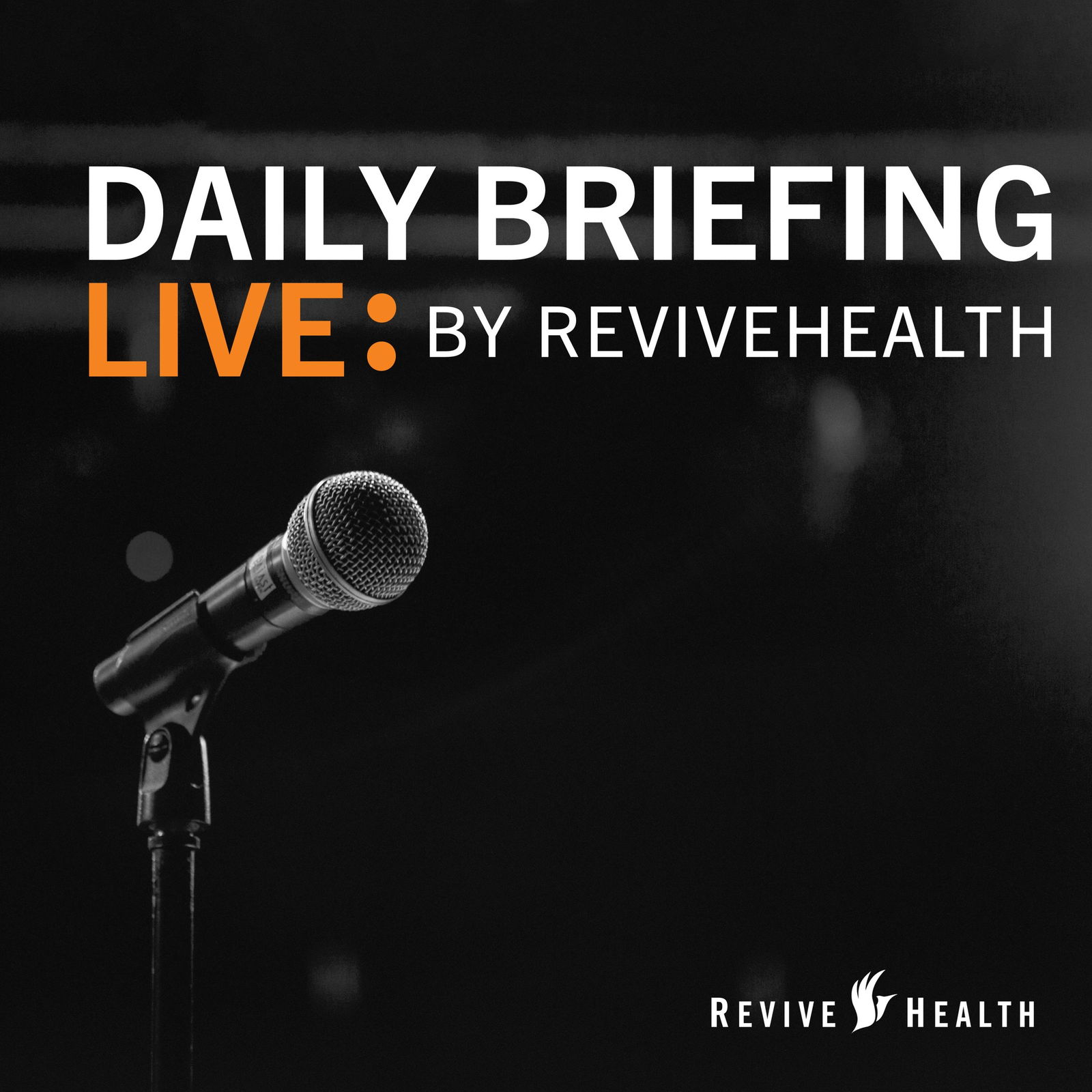
Daily Briefing Live – May 22, 2020
Key Resources Mentioned in Today's EpisodeModern Healthcare Article: April was the worst month ever for hospital operating marginsKey TakeAwaysReflections from a CMOAs marketers, we've aligned to take on the task at hand.We've assessed the best way to use our resources in a responsible way to make an impact.Providing clarity to our team has been crucial to our well-being during this crisis. In past crises (Hurricane Katrina, for instance), we were able to pull help from other markets. Unfortunately, with COVID-19, we're all in the same place — unable to use our networks for resources as we have in the past.The ability to be proactive in our earned media has earned the confidence of our leadership and executives.We come at each challenge with a sense of responsibility.The biggest takeaway from this timeThe ability to be clear in answering:What is the task? What is the strategy?Who are we trying to serve?Understanding that people don't have extra bandwidth at this time and providing them with grace and clarity. The biggest challenges in moving forwardEventually, we will return to what is familiar. As we get further away from this period, it's crucial to keep disciplined and to continue the impact we've created during this time.We will focus on these things:Recognizing good work.Talking about results.Finding the "why" behind the strategy.Creating the ability to move quickly.
30:5227/05/2020
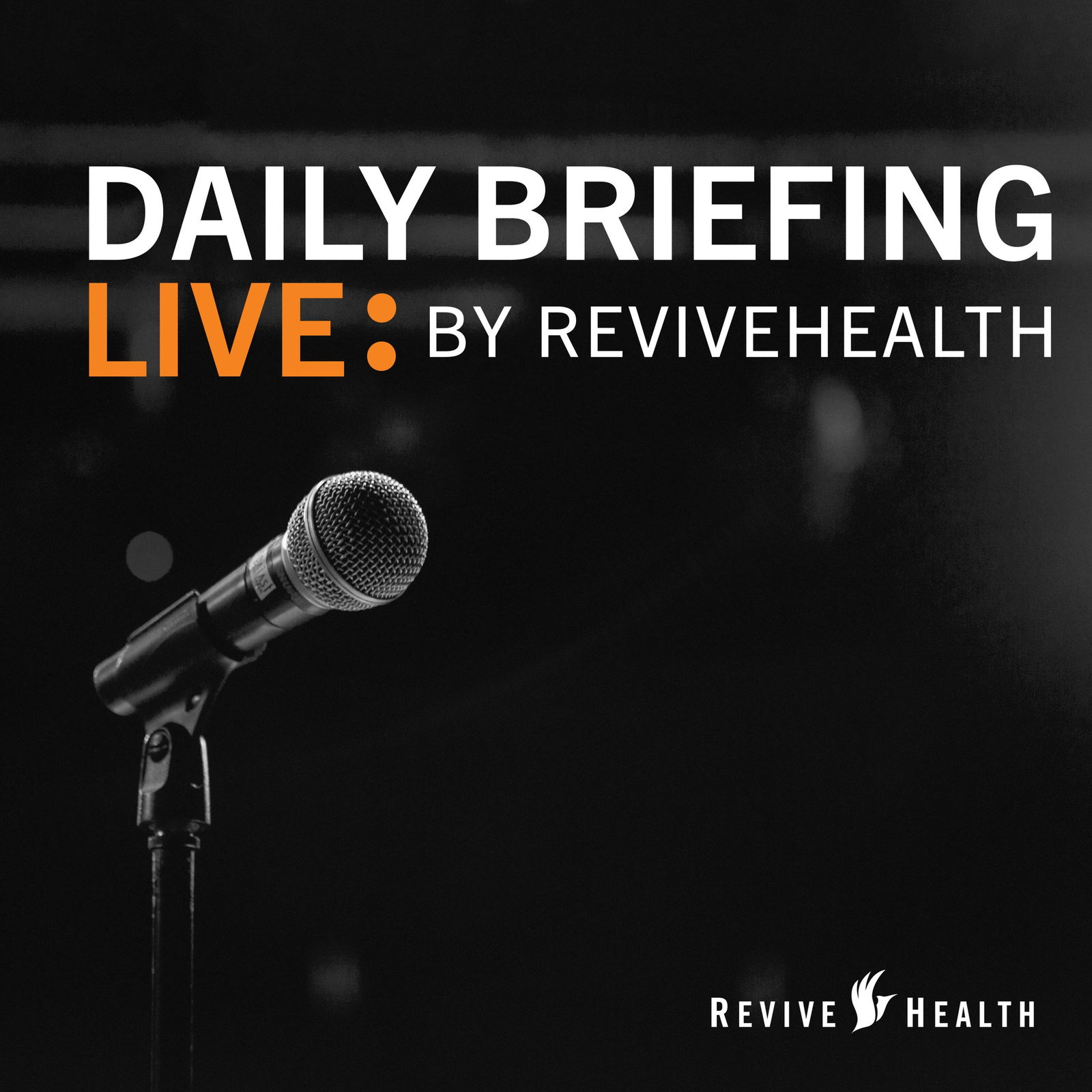
Daily Briefing Live – May 21, 2020
Resources Mentioned in Today's EpisodeNew York Times Article: I Was Supposed to Eat at a Restaurant. I Bailed.Key TakeAwaysA Macro PerspectiveFear of infection is gradually declining, though two-thirds of Americans are still concerned about becoming ill or fear someone in their family will become infected.83 percent of people believe that social distancing is effective in saving lives.Although unemployment numbers are high, there's still more optimism about the job market than the financial crisis of 2008.In Jarrett's findings, there are three types of public opinions:Those who are ready to reopen.Those who do not want to be the first to step back out but are ready to reopen.Those who will not return to normal life until there is a vaccine.Consuming InformationIn the first part of March, Republicans were apprehensive about precautions; by the middle of March and into April, the parties were mostly on the same page about precautionary measures. Now, we're seeing a sizable partisan gap again.People are choosing their own news, and it's impacting how they're processing the pandemic. There are significant differences between partisan parties about PPE, reopening, and the death count.Health systems have patients of every party and should consider understanding the psychology of what drives people.Healthcare providers are still considered the most trusted news source, but there is a disconnect between providers and communities.
33:0422/05/2020
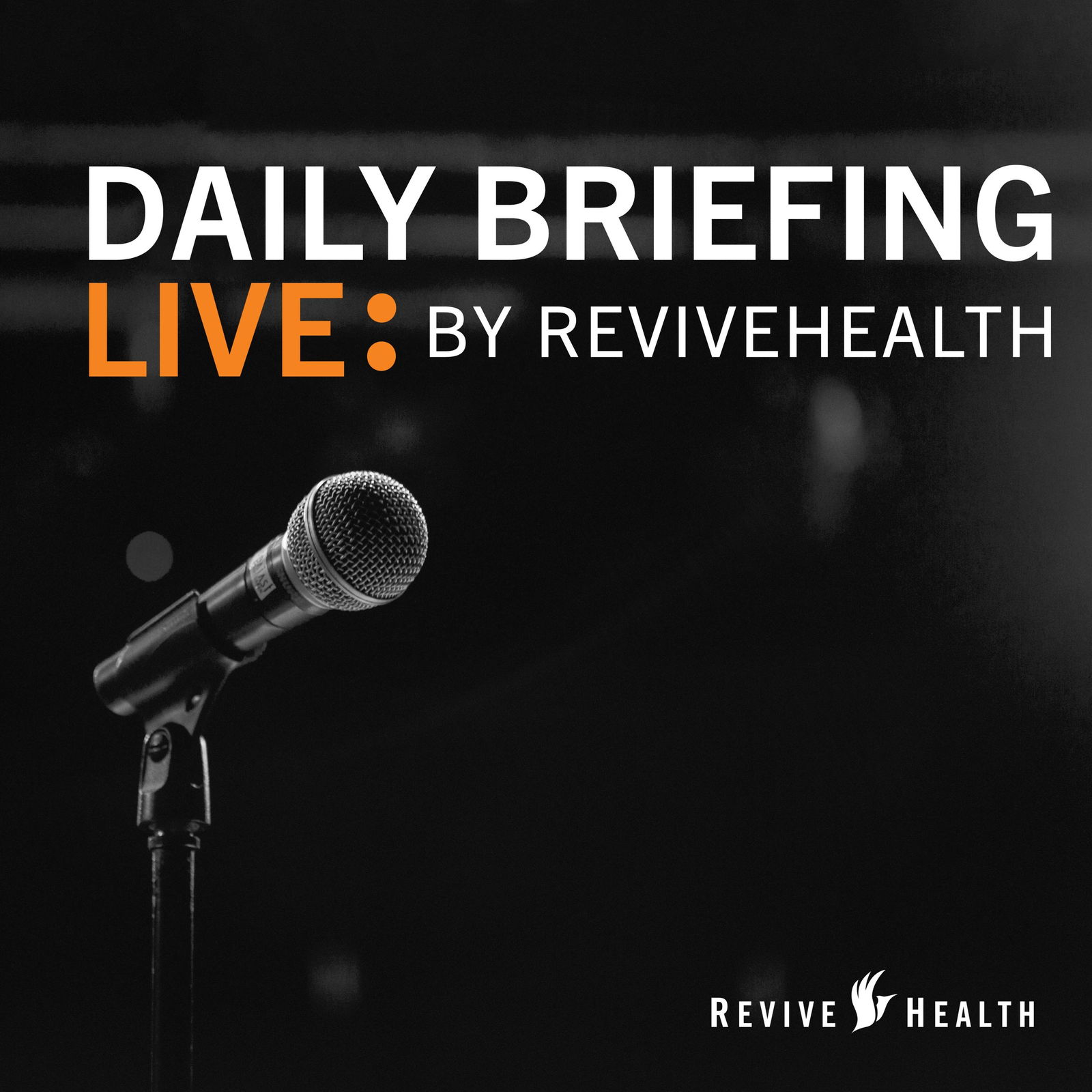
Daily Briefing Live – May 20, 2020
Resources Mentioned in Today's EpisodeCNN article: Florida and Georgia facing scrutiny for their COVID-19 data reportingVox article: Georgia’s COVID-19 cases aren’t declining as quickly as initial data suggested they wereKateto survey: The State of the Nation: A 50-State COVID-19 SurveyPrimary Care Collaborative survey: Primary Care & COVID-19: Week 8 SurveySubscribe to our bi-weekly COVID-19 communication insight reportsKey TakeawaysCOVID-19's Impact on Primary Care70 percent of practices have reported a 50 percent drop in inpatient visits, and only half of those visits are reimbursable. One-third of primary care clinicians believe COVID-19 is going to affect the independence of primary care practices across the country.According to Epic Health Resources, there has been an 86 to 95 percent decrease in cancer screening during this time.Many patients have put off care, which is going to increase acute care over time.What Should Marketers Be Doing to Support Primary Care Clinics?Continue to push for patients to come in for annual exams.Make sure your hospital has a digital experience enabled.Increase self-screening and make sure they have easy access to virtual visits if they find something abnormal.
30:0721/05/2020
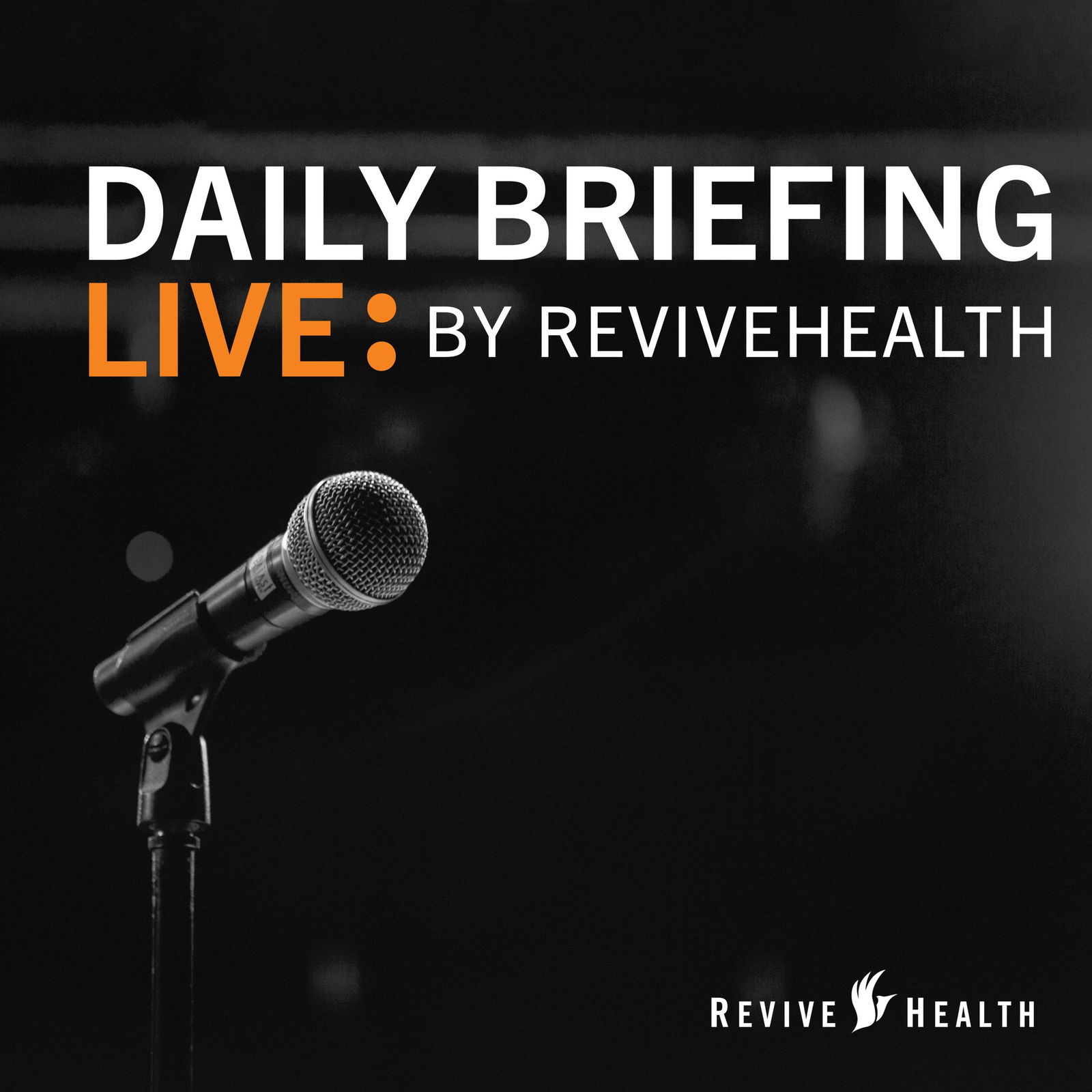
Daily Briefing Live – May 19, 2020
Key Resources Mentioned in Today's EpisodeAxios article: Spine and joint procedures have taken a dive during the pandemic Key TakeAwaysThe Providence St. Joseph Covid-19 ApproachResponding to the media and internal audiences was incredibly important because the news was swinging between two extremes.Providence was able to get their unbiased perspective out into the communities that they serve, which allowed their consumers to have the best information from those battling the crisis. Providence had 1400+ COVID-19 patients in the last two months and have had to delay 110,000 surgeries due to the shutdown.They created an internal dashboard that lets their providers and healthcare workers know where they stand with PPE and testing to provide transparency. They are in the green in almost all metrics, but want workers to know the policies they have in place if they ever go in the yellow or red.It was vital for Providence to launch the 100 million mask campaign so that they had enough PPE for their front-line workers. It took on a life of its own in when Mukilteo (a Washington furniture factory), Nordstrom, Alaska Airlines, and others stepped in to make sure their hospitals had enough PPE. Eventually, AHA adopted the campaign and allowed it to go nationally to ensure hospitals across the country had enough PPE.
31:2520/05/2020
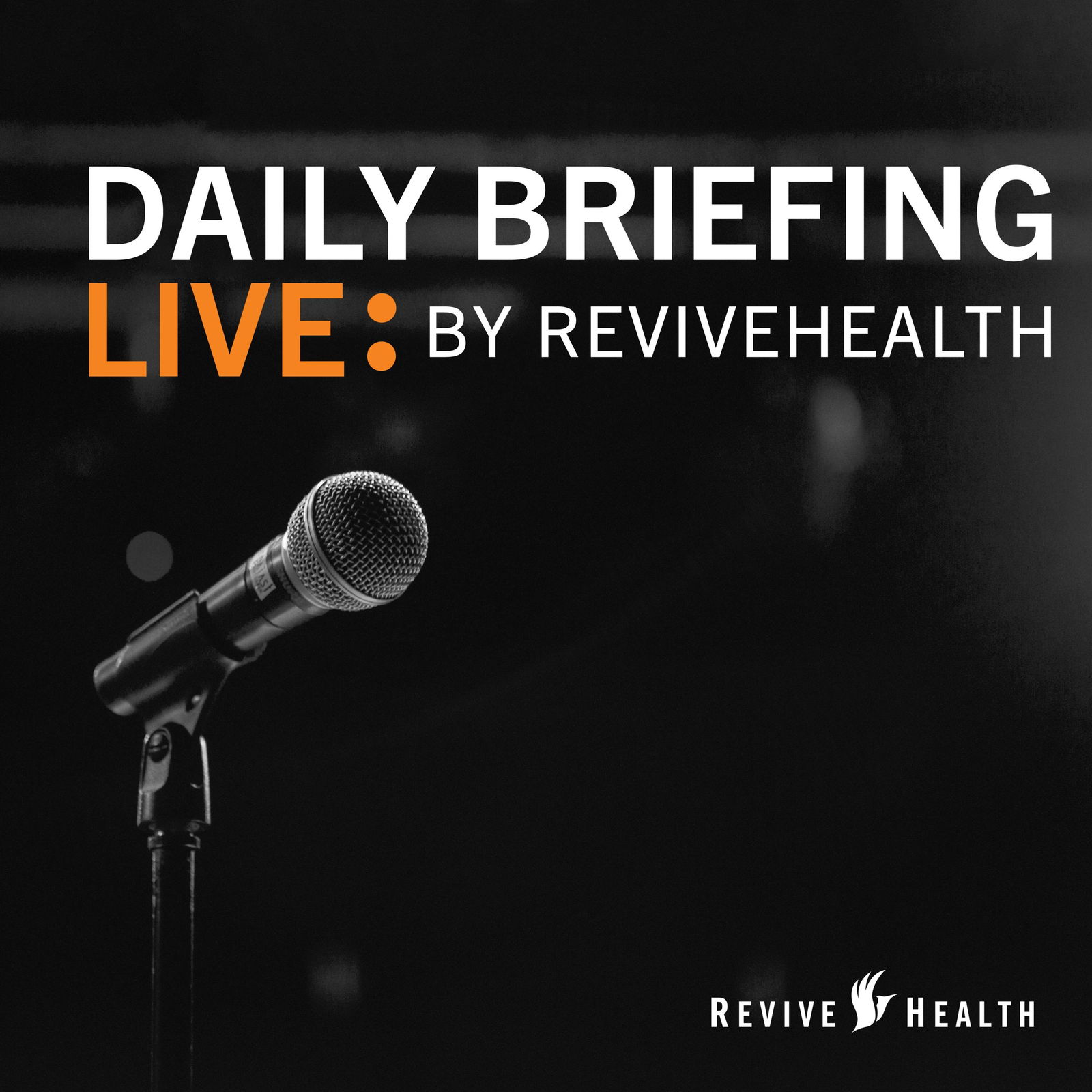
Daily Briefing Live – May 18, 2020
Key Resources Mentioned in Today's EpisodeThe Commonwealth Fund Article: Primary Care as a Bulwark Against COVID-19Key TakeAwaysPrimary Care and Reverse Trends – Walmart HealthIs retail health COVID-19 proof?Walmart Health is promising because it provides convenience and affordability while having a business that is minimally affected by the pandemic.There have been multiple stores that have been noted as COVID-19 hot spots, but surveys tell us this data has failed to dissuade consumers from going to the stores.Retail healthcare is focused on community-based care, which has shined during this time.Is there a generational difference?Millennials don’t feel a need to have a relationship with their PCP.COVID-19 might be the time to build trust with consumers and educate them about the importance of having a PCP.The eruption of hospitals actively using telehealth will provide convenience for consumers in interacting with a health system.
31:1119/05/2020
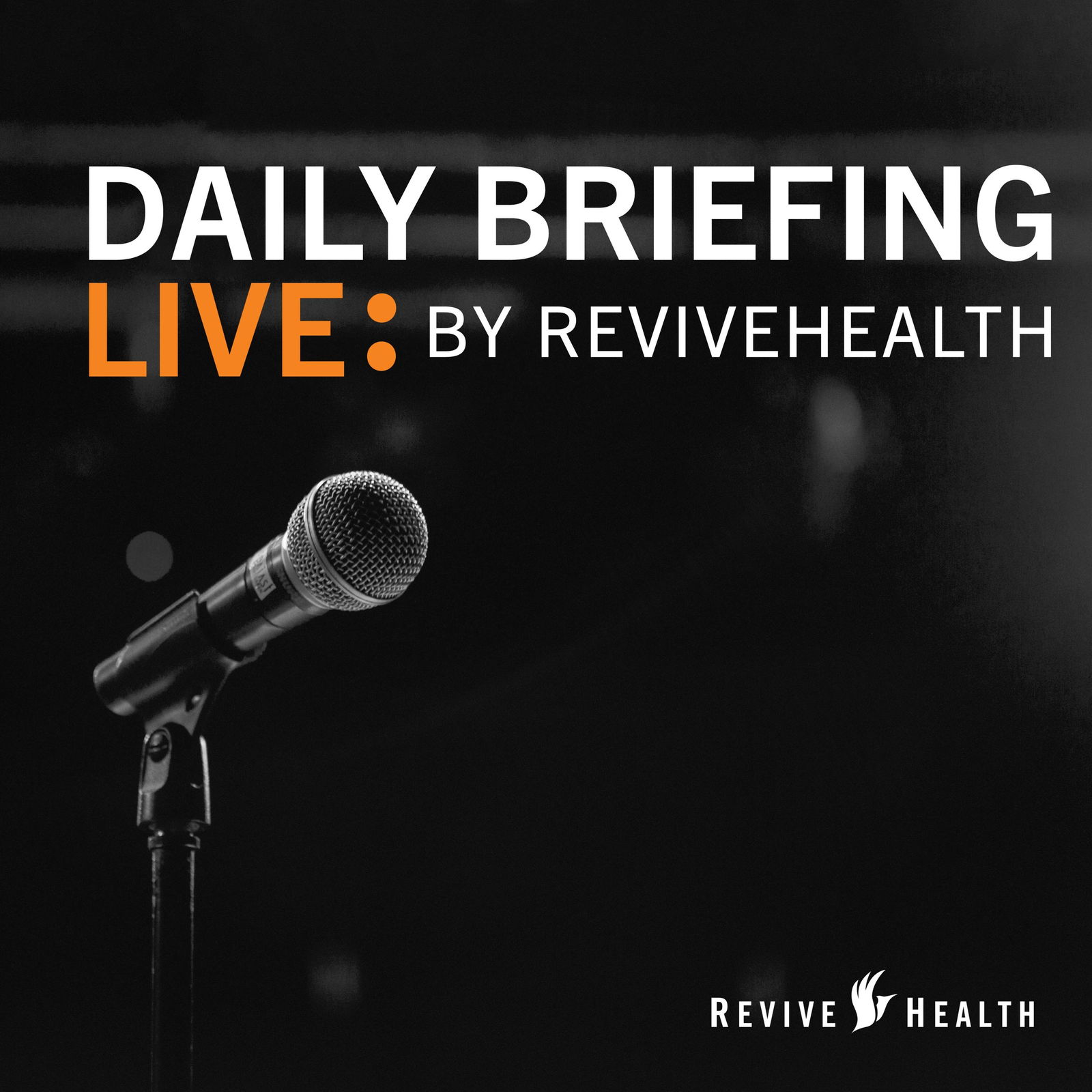
Daily Briefing Live – May 15, 2020
Key Resources Mentioned in Today's EpisodeNew York Times article: Hospitals knew how to make money. Then coronavirus happened.Kaiser Family Foundation article: Eligibility for ACA health coverage following job lossAxios article: The coming coronavirus mental health crisis:The Case for Building a Post Health System BrandVCU shoutout: A collaboration between a doctor and black clergy in Richmond could be a model. Health care should be the next great social justice movement. Key TakeAwaysBeing a Leader in Today’s MarketMarkets that have provided transparency, continuous public health and education messaging, and partnerships with other markets, have proven to be trusted leaders during this time.Contact tracing is critical for cities and states that are taking a more cautious approach to reopening.There’s a need for people and employees to understand their mental health resources and how to access them. Ask yourself what the need is in your market and as a leader of that community, what can you do about it?Keep the dialogue and relationships going with public figures about the importance of public health messaging even as COVID-19 starts to decline.
26:3616/05/2020
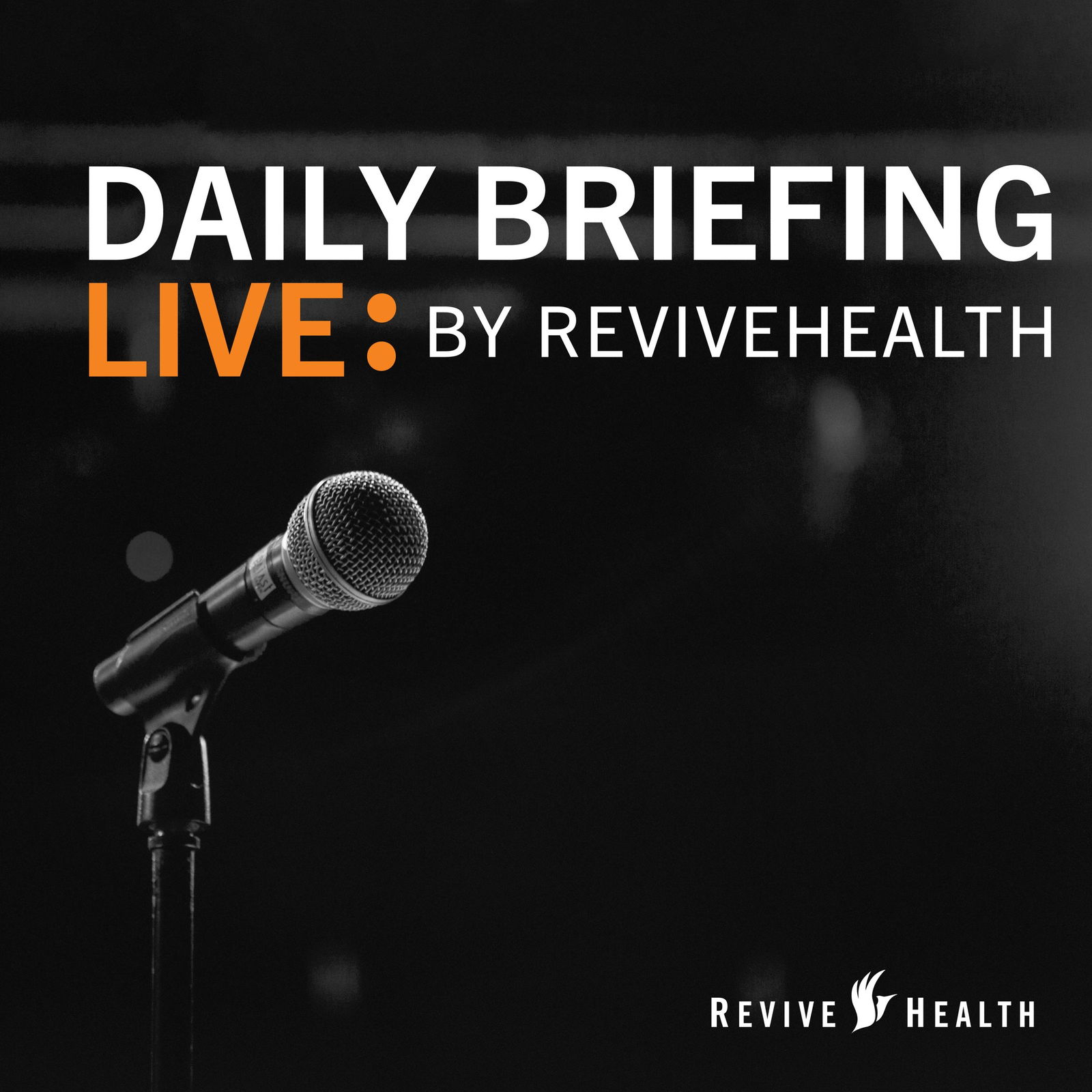
Daily Briefing Live – May 14, 2020
Resources Mentioned in Today's EpisodeNew York Times COVID-19 cases dashboardTimes article: As New COVID-19 Cases Decline in New York, the Rest of the Nation Is Going the Opposite DirectionKey TakeawaysFears of Returning to the Hospital – Qualitative Research ResultsWe surveyed 13 people in each market that were scheduled for surgeries as well as patients with acute needs during this time to try and understand their feelings and fears regarding hospitals and what steps we need to take to work through those fears. When asking patients if they were ready to receive care today, here were the three main buckets they found themselves in: Not afraid at all. Not afraid, but if "xyz" is not addressed, will put off medical care. Willing to put off medical care. We found that patients aren’t as trusting of healthcare systems as they initially thought they'd be.Most individuals stated that they want facts about what they will experience when they see their physician. We found instances of individuals wanting to avoid excessive interaction with clinical staff and other patients.
33:2415/05/2020
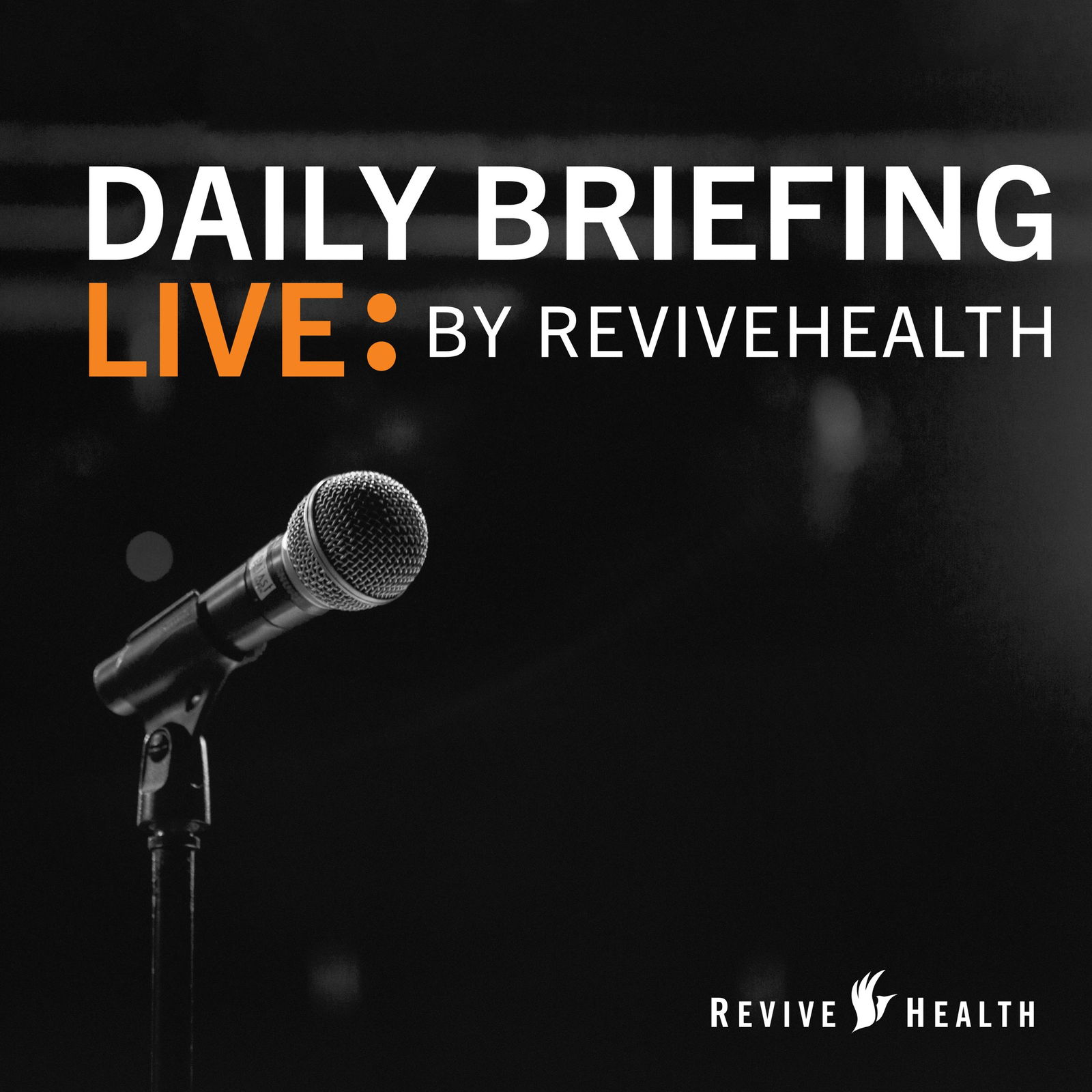
Daily Briefing Live – May 13, 2020
Resources Mentioned in Today's EpisodeNPR article: Combining Models, New Projection Puts U.S. Coronavirus Deaths At 110,000 By June 6National Patient and Procedure Volume Tracker by Strata Decision TechnologyKey TakeAwaysConsumer TargetingHospitals will have a small window of time to fill their surgery queues, identify which procedures they’re most equipped to perform and think about the kind of financial impact they want to make during this time.Start at the bottom of the funnel with patients whom you already know.Then, move on to patients that need surgeries your hospital is most equipped to perform. You can get them in quickly and provide financial stability for your hospital at the same time.How Do Health Systems Implement This?Marketers will use the “outside-in approach” when patient information isn’t available.There’s also the “inside-out approach,” which allows access to customer databases so that marketers can focus on patients that are most at risk.We start by following this approach:Who is the audience?What are the procedures we’re most operationally ready to return immediately?Then we communicate through the most appropriate channel to meet this audience.Learning from Patient BehaviorsWe are looking at the patient information that is readily available at the hospital’s disposal and then we start leveraging that information for audience creation.
30:3414/05/2020

Daily Briefing Live – May 12, 2020
Resources Mentioned in Today's EpisodeModern Healthcare article: Deferred Procedures Drain Hospital Revenue by $60 Billion a MonthHealth Leaders article: Three Revenue Cycle Hurdles for Resuming Elective ProceduresKey TakeawaysRevenue Loss for Hospitals and Health SystemsCOVID-19 is going to continue to be a financial pain; commercial payments will be important moving forward to turn a profit.According to the Robert Wood Johnson Foundation, an estimated 25-43 million people could lose their employer-sponsored health insurance coverage before things settle. Some will land in state Medicaid programs, some will buy individual plans they can afford, and as many as half will go without insurance.Challenges for Rapid RecoveryOpening back up will involve organization across the health system; from service lines, to staffing, OR space, and even determining the priority of patients.PPE will be an ongoing concern for weeks, if not months. Reassuring staff and patients that you have adequate supply is essential.Measures should be made clear on the visitation process for patient families and guests. Communicate your plan on how to keep these individuals safe.If you haven’t already, marketers need to find a way to be a part of the reopening committee. It will aid in how you communicate when going to market and gaining patient trust.Financial FearConsumers are concerned with their financial situations and are withholding out of pocket spending even if they are employed.The idea of stretching out prescriptions and putting off medical expenses is a significant financial fear for health systems. It is taking more effort to convince patients to come back into a hospital post-COVID-19.Marketing owns the consumer lens in a health system, and we should be bringing that outside perspective about financial fears through our communication strategies to meet our community where they find themselves.
30:0213/05/2020
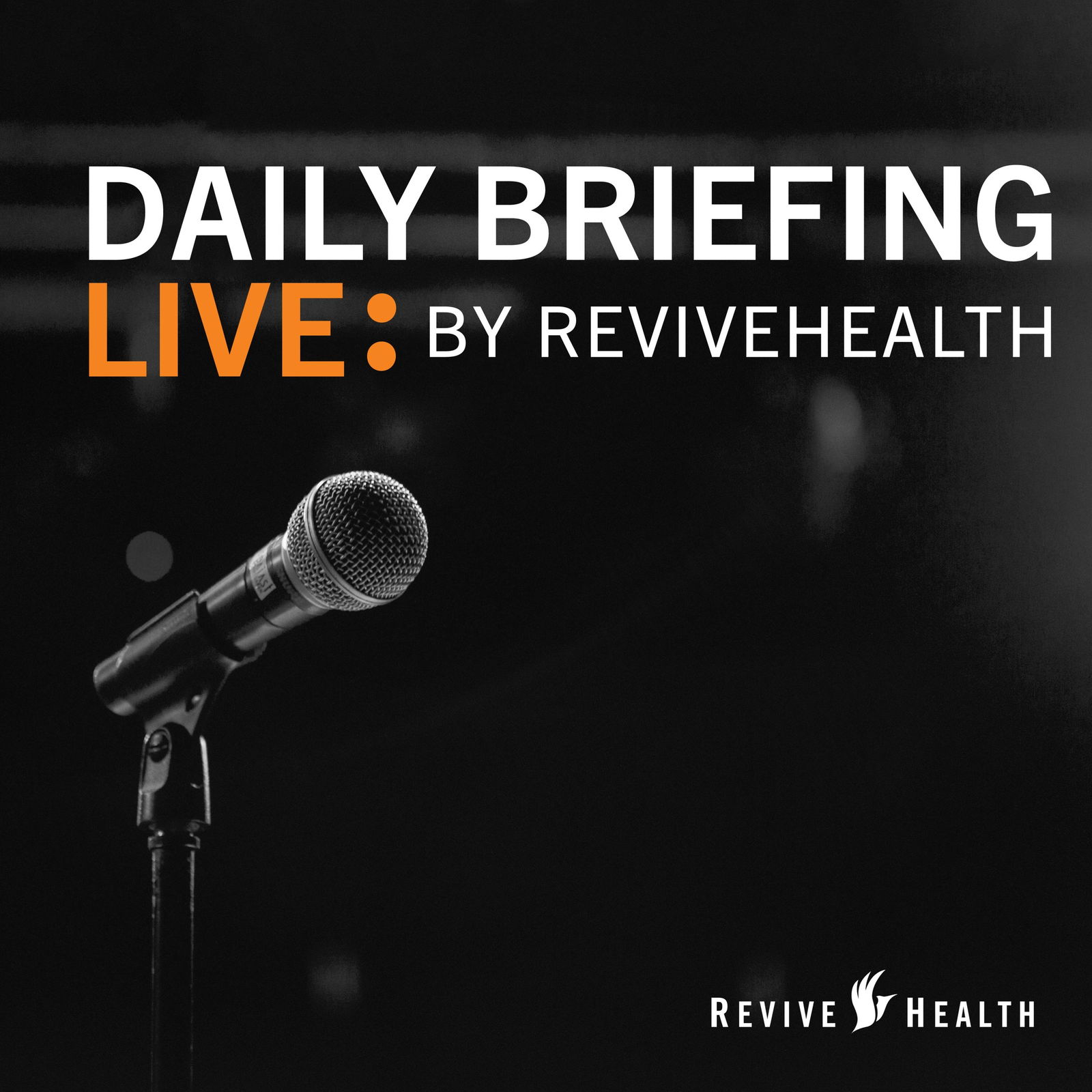
Daily Briefing Live – May 11, 2020
Resources Mentioned in Today's EpisodeReviveHealth COVID-19 Communication HubKey TakeawaysInternal CommunicationsUnderstanding that employees will have a spectrum of feelings during and after the reopening of hospitals is essential in providing the appropriate support needed.Health system leaders should think about the humanity of and the experiences of their front-line workers as they create their internal messages.Two-way communication is essential in understanding how people are feeling.Focusing on listening and providing open forums that allow for two-way communication will show support and empathy from hospital leadership.Continually communicating resources to front-line workers will provide comfort as these individuals navigate the trauma created from COVID-19. Resources can and should include:Mental health supportCounselingTelemedicineFuture Internal CommunicationsMoving forward, companies need to prepare for the second wave.In order to prepare, you should start by asking:What can you do better the second time around?Do you have the resources you need in place?What is your crisis plan? Remember to be human and transparent.
28:4912/05/2020
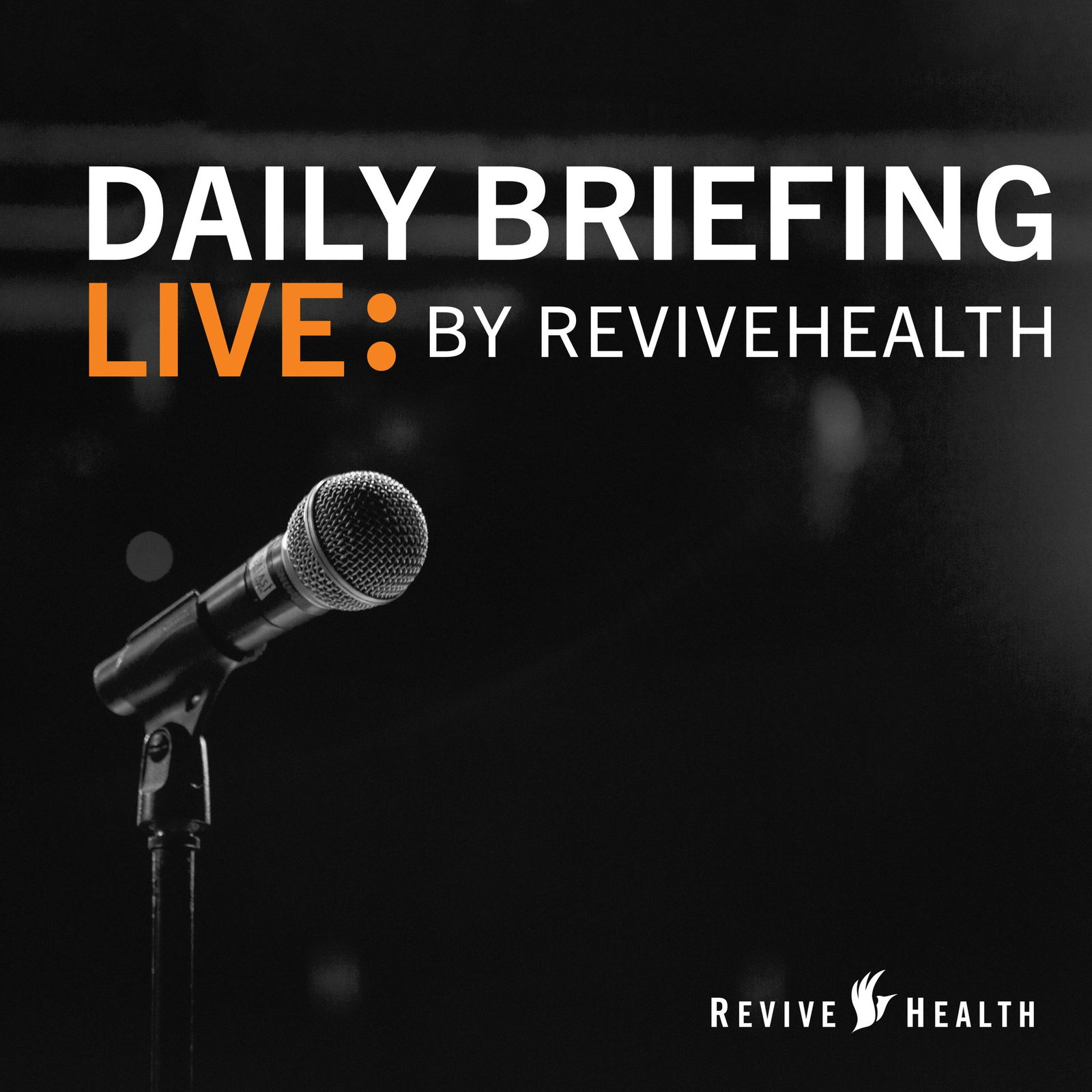
Daily Briefing Live – May 8, 2020
Key Resources Mentioned in Today's EpisodeModern Healthcare article: California hospitals ask governor for $1 billion in immediate aidBain article: The U.S. is not fully prepared to resume elective medical careModern Healthcare article: U.S. faces 'truly daunting' challenges on needed COVID tests:‘Plandemic’ articleKey TakeAwaysObservations About Patient AcquisitionConsumers are trusting their local health experts to provide guidance during this time, and are thinking about their health more than ever.6/10 people are willing to switch providers, according to our latest research, even if they already had a planned surgery before the COVID-19 shutdown.3 Primary Levers to Pull for Patient AcquisitionDirect responseBefore proactively marketing a service line, the organization must be ready for those seeking care by maximizing reactive tactics.Example tactics include:Always-on searchWebsite content (particularly on service line pages)Call center capabilitiesORMFind-a-Physician toolPhysician referralsThe quickest and most powerful way to impact volumes is by understanding and improving physician referral patterns.What does your outreach program look like?What can you do to make your referral process as easy as possible?Provide educational messages so referring doctors know they’re sending patients to a safe place.Don't forget physician-to-physician communication.Demand generation – How can you be top of mind?Once direct response and physician referral tactics are in place, systems can generate demand for service line volume through targeted personalized marketing, promotional campaigns, and content marketing programs.Example demand generation tactics include:Personalized marketing campaignsPromotional campaignsContent marketingThe luxury of building relationships isn’t available during this time. We’re advocating that health systems think about unifying their service line campaigns for efficiency.
32:5209/05/2020
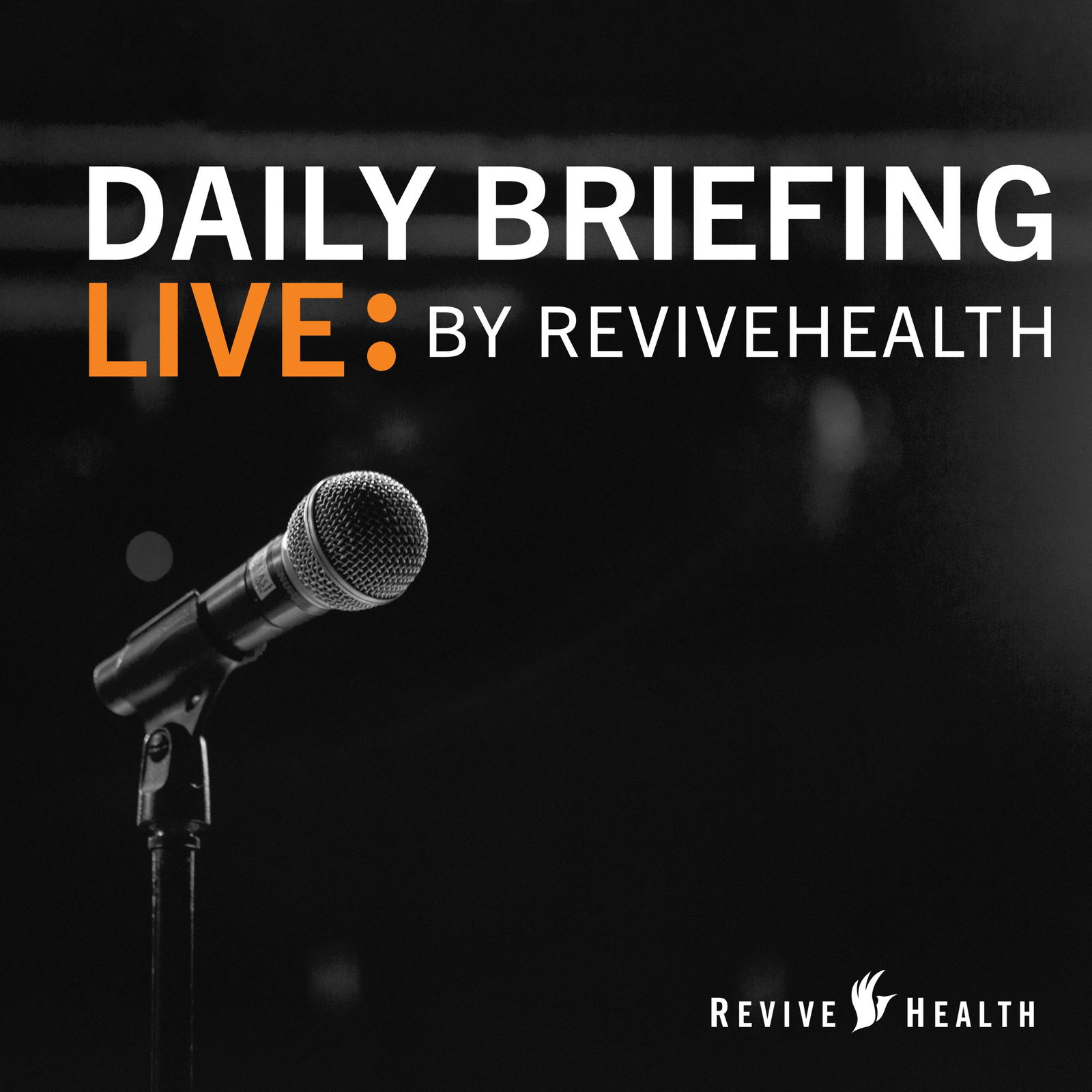
Daily Briefing Live – May 7, 2020
Key Resources Mentioned in Today's EpisodeBain survey: The US Is Not Fully Prepared to Resume Elective Medical CareAlan Shoebridge article: The 80% Healthcare EconomyRevive’s Latest Consumer Survey ReportKey TakeAwaysReturning to Clinical Settings56% of consumers have concerns over the cleanliness of hospitals and that they might contract Covid-19 from other patients.76% of consumers surveyed are planning on altering how they seek care going forward.Opportunities for BrandsHealth systems should be consistent in their messaging to consumers. It’s important to avoid self-promoting and focus on being empathetic.This is a once in a lifetime opportunity to reach consumers and retain their loyalty.It’s too early to market competitively. Health systems have gained an empathetic following that they should harness as long as possible.Any information about testing and how to receive it is still essential.Health systems need to continue to work as equals to make sure factual information gets to their communities efficiently.
30:5208/05/2020
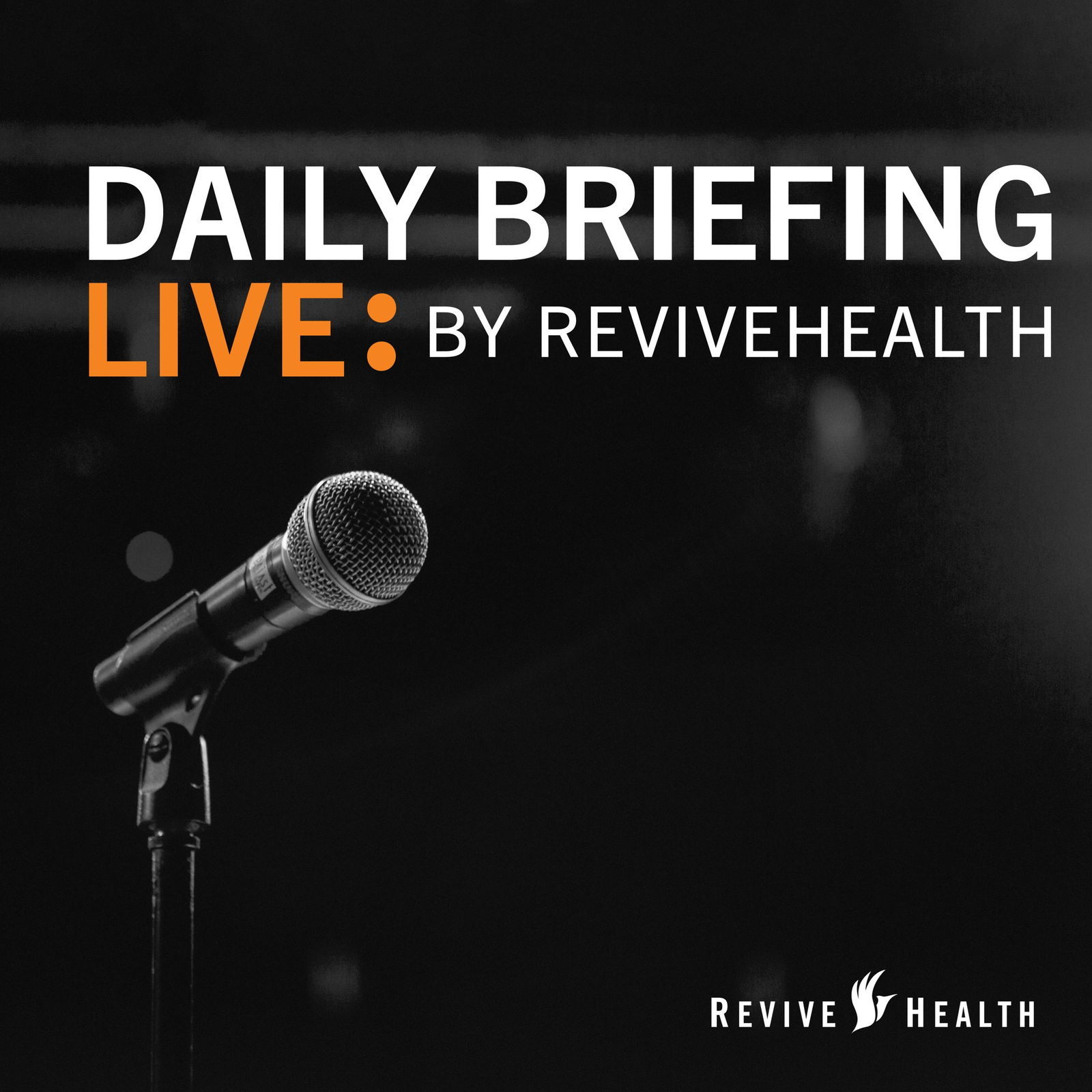
Daily Briefing Live – May 6, 2020
Key Resources Mentioned in Today's EpisodeNation’s hospitals losing about $50B a month fighting pandemic according to AHA: https://www.aha.org/news/headline/2020-05-05-report-nations-hospitals-losing-about-50b-month-fighting-pandemicEpic Health Research Network: https://ehrn.org/Expansion of Telehealth during COVID-19 Pandemic: https://ehrn.org/wp-content/uploads/Expansions-in-Telehealth-COVID-19.pdfKey TakeAwaysVirtual Care AdoptionVirtual care has expanded by 300% since last year.According to the EHRN findings, 50% of healthcare visits are done through Telehealth.Virtual care has been forced upon providers and consumers.Looking ahead, you should be asking:Over the next 1-2 weeksWhat’s happening competitively? What is being offered?Start with your brand strengthsOver the next 1-2 monthsHow does your virtual program match up to others?Long termIs your virtual program infrastructure set up so that it can withstand long term use of virtual health?In order to be effective in the future, health systems need to optimize their organizational strategy. User Experience MappingIt will be critical to set expectations for consumers as they visit your website and come across these new platforms.Training doctors on how to practice online will be necessary to the system’s adoption of the platform and the patient experience.Healthcare marketers can set up key measures to see what drives the patient experience and, in turn, what gets them to return to a health system. What’s the difference between Telemedicine and Telehealth?Telemedicine is physician-to-physician and physician-to-patient.Telehealth is broader, with capabilities such as texting and remote health.
31:5307/05/2020

Daily Briefing Live – May 5, 2020
Key Resources Mentioned in Today's EpisodeWashington Post: Historic financial decline hits doctors, dentists, and hospitalsKey TakeAwaysConsumer PreferencesConsumers find videos to be more engaging, accessible, and memorable than any other type of content.Video as a means of storytelling and advertising is no longer a nice-to-have-option – it’s a necessity.Video TrendsThe most common use of video today is through social media content/marketing.The good news is that your video doesn’t always need a full production crew to be effective.Some key factors to consider when making a video is the content and how and where it will be distributed.Live video is not new and has been around for a while, but right now, it's more relevant than ever.Marketing videos can take many forms during a time like COVID-19, such as:Q&A sessionsBehind-the-scenesPatient testimonialsInterviews with expertsThere are many different ways to present your videos to ensure your message is reaching the right people:ExplainersPresentationsWebsite heroesTutorialsWebinarsCustomer testimonialsInterviewsLive streamsLive video
27:3406/05/2020
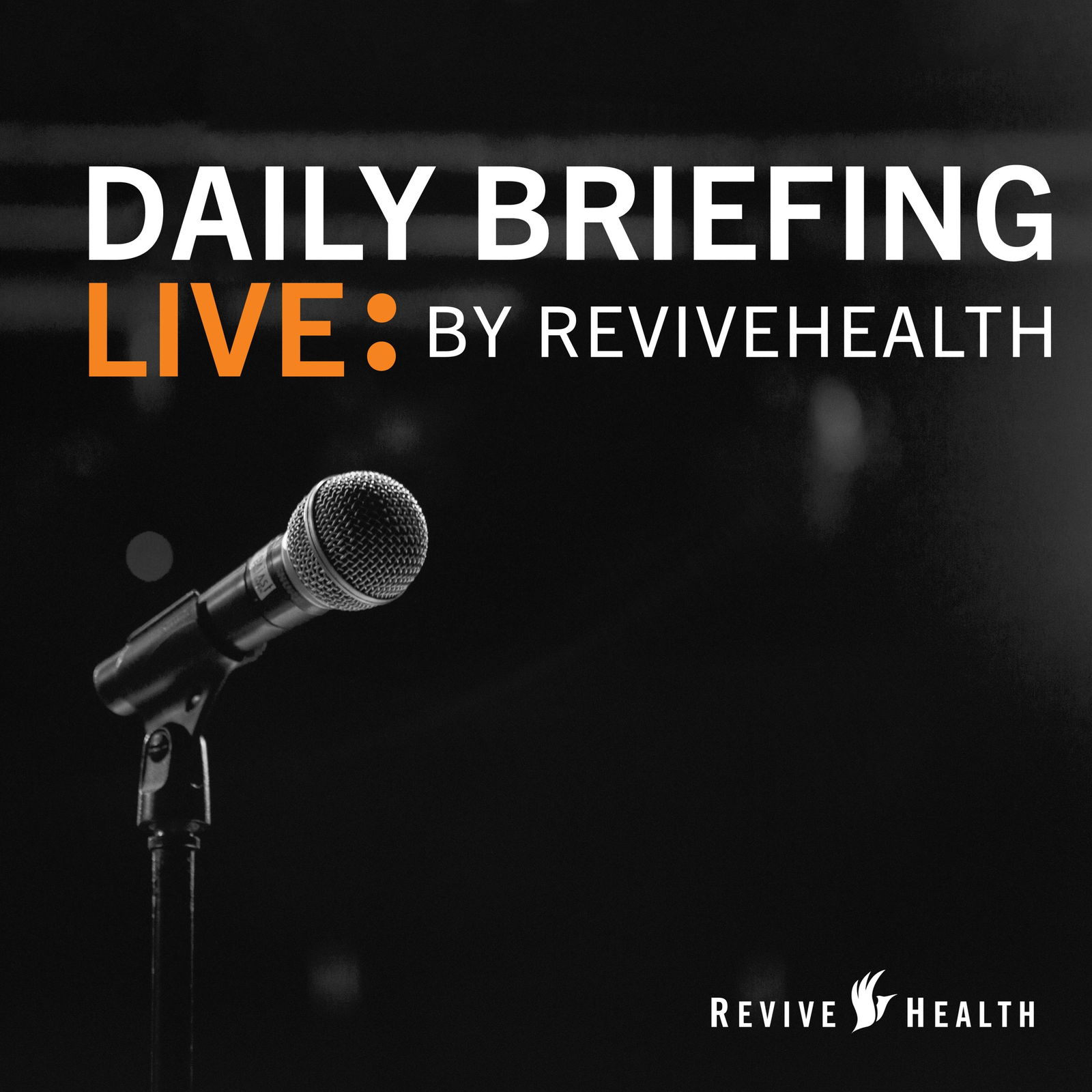
Daily Briefing Live – May 4, 2020
Key Resources Mentioned in Today's EpisodeSTAT Article: Three potential futures for Covid-19: recurring small outbreaks, a monster wave, or a persistent crisisBecker Hospital Review: Health system opening logKey TakeAwaysDoes Joe Public care NOW?He does – we now know from our research that consumers want to hear from their hospitals and health systems often, and they trust them as a leading source of information.The question is, when we move away from the crisis, can they maintain that sentiment?There is potential that the perceived role of the health system changes indefinitely going forward.What should a health system be focused on communicating right now?All regions will be different, but around the idea or reopening, while there's a rush to get to the market with a high-level "we're open", it's not that simple.There are internal, patient, and external communications involved with a reopening message, and you must communicate specifically what is opening.While we know it is difficult, it is important to contact every patient who has postponed procedures before going out to the market with any reopening messages.What have you seen operationally going well and what have you seen as problematic?The good: internal recognition of how hard this will be and the fear of consumers, as well as the increased use of telehealth.The bad: chow you reopen needs to be centralized, orchestrated approach and rolled out appropriately. Instead, many health systems and hospitals are doing this chaotically and driven mainly by the physicians.Do you think COVID-19 will fundamentally change how health systems market once the crisis is over?It's still too soon to know exactly the answer, but we see that the consumer will view the value and perception of health systems, hospitals, and physicians as heroic.We also see the potential for cost and industry "disruptors" to be emphasized in light of the new hospital and health system perception.
38:4105/05/2020
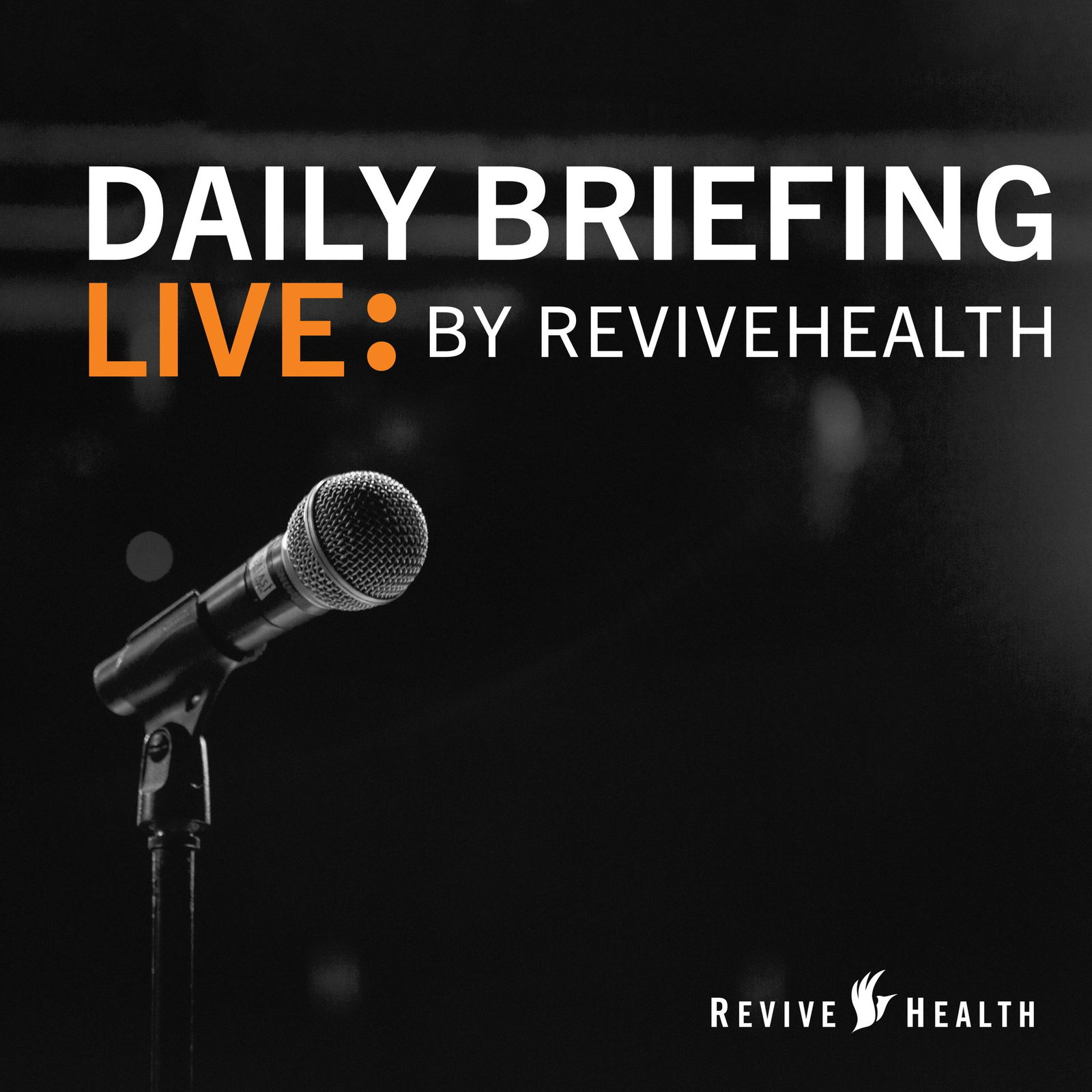
Daily Briefing Live – May 1, 2020
Key Resources Mentioned in Today's EpisodeStat News Article: Health care worker suicides hint at COVID-19 mental health crisis to comeUSA Today Article: Coronavirus strains cash-strapped hospitals, could cause up to 100 to close within a yearBecker's Hospital Review Article: 25 states resuming elective surgeriesMorning Consult Report: American College of Emergency Physicians COVID-19Key TakeawaysAddressing the fear of opening up again1/3 of Americans have put off care due to the COVID-19 crisis.Patients are going to need multiple reassurances when hospitals open up their doors to minimize the patient's fears. They'll want to know:What are you doing to sanitize?What are you doing for infection control?Each health system should conduct local market testing to understand what resonates with the consumers in their community.The financial reality post-COVID-19Health systems should continue to build relationships with Chambers of Commerce and other business-minded organizations at the local level.Members of these organizations are vital ambassadors for health systems because:They can provide insight into the economic impact of a health system on a community.They can offer help to employers and find out what they need from their health system.They can talk to elected officials about securing funds for the future.Many hospitals and health systems will be vulnerable to acquisitions post-COVID-19.If that's the case, communications and business leaders should begin preparing communications plans to make this challenging announcement.
25:3002/05/2020





